Advertisement
Supported by

Travelers Ask, Cash, What’s That?
In a transition hastened by the pandemic, increasingly you can travel abroad and barely ever handle a physical bill or coin, whether pounds, kroner or euros. A guide to going cashless overseas.
- Share full article

By Beth Harpaz
On a recent trip to England, Andrew Dodson, 35, and his wife, Erin, 32, who live in Traverse City, Mich., had an unexpected problem: No matter how hard they tried, they couldn’t spend the 700 British pounds they’d brought along.
“We traveled all around the country, including many small towns in the Lake District and the Cotswolds, and even the tiniest of pubs took cards,” said Mr. Dodson, a content marketing manager for TentCraft, a manufacturer of customized tents and accessories. “Many wouldn’t even accept cash. As we approached the end of our trip, we went to a nice dinner at this Indian restaurant where we hoped to spend off some of the cash we converted, only to be told they don’t accept cash anymore.”
Finally, their London hotel let them pay their balance with cash so they wouldn’t have to bring the pounds home and reconvert them to dollars.
For American vacationers, traveling overseas used to involve the ritual of obtaining local currency, whether from a bank at home before heading off, or from an A.T.M. or currency exchange at their destination. But in a transition hastened by the pandemic’s preference for contactless payment, increasingly you can travel abroad and barely ever handle a physical bill or coin, whether pounds, kroner or euros.
“I’ve had the same 10 euro in my purse for weeks,” said Julene English, 62, a Fairfax, Calif., retiree on her first international trip since the pandemic, a three-month sojourn with her husband in Italy, France and Britain.
Consumers and the travel industry are both playing a part in the trend toward cashless trips. Travel suppliers and service providers have “adopted technology to facilitate online transactions and payments,” while consumers have become “more familiar and comfortable with contactless payments,” said Charuta Fadnis, a senior vice president for research and product strategy at the travel industry research firm Phocuswright . “Paying with a tap of their cards or phones is a behavior that is expected to persist.”
Of course, the move to cashless travel didn’t start with the pandemic. The increased use of digital payment options and mobile wallets is a long-term trend that’s been going on for the last 10 years in Asia and the last three years everywhere else, said Michael Orlando, the chief operating officer of the global payments company Yapstone .
“But there’s no question that the pandemic helped shift that trend into high gear,” said Matt Schulz, the chief credit analyst at LendingTree , the online loan company. Not only did consumers start ordering more things online and by cellphone when the pandemic started, but there was an aversion to handling physical money, especially early on when less was known about how the virus spread. “People just felt more comfortable handing over their plastic or using things like QR codes and mobile pay apps than using cash,” he said.
If you’re heading abroad this summer for the first time since the start of the pandemic, here’s what you need to know about when you’ll need cash (tips, restrooms), when you won’t (shops, restaurants), and how to optimize your credit card, bank card and digital payment options.
Tap, don’t swipe
These days, many vendors outside the United States only accept contactless cards. On his trip, Mr. Dodson said he kept trying to “insert the chip or even swipe on a mobile card reader that the waiter would bring by, only to be reminded that ‘You must tap.’”
Ben Soppitt, the C.E.O. of Unifimoney, a digital wealth management platform, said contactless technology has been the “de facto standard for almost a decade” in many places outside the United States. Indeed, Mastercard reports that half its transactions worldwide are now contactless.
Check your cards before you head overseas and if they don’t have the contactless payment symbol (a series of four curved lines), call your credit card company for a replacement before you travel.
Make sure any card you take abroad waives foreign transaction fees, since you don’t want to replace the currency exchange commission with an even higher credit card fee, which can run as high as 3 percent of every purchase. If you need a new card to avoid fees, Nick Ewen, the director of content at the Points Guy, a website that covers reward travel and related issues, said the Capital One VentureOne is a good choice.
And if you’re asked whether you prefer to be charged in local currency or in American dollars, choose local currency to avoid paying “steep conversion fees,” counsels Max Jones, a travel adviser with the Virtuoso Network and owner of the concierge agency Change Travel.
An added benefit with contactless cards is that they can be used for bus and train fares in many places (including New York City). No more paying extra for a transit card, no more guessing how much money to load on it, no more navigating confusing instructions at a kiosk. Combine the ease of contactless fares with directions from an app, and you’ll be using public transit like a native.
Have a digital backup plan
Nicole Gustas, 51, of Somerville, Mass., the marketing director for International Citizens Insurance, which sells travel and other overseas insurance, said she was “caught flat-footed more than once” in New Zealand and Australia because her credit cards weren’t contactless and merchants couldn’t process them. To get around the problem, she installed Google Pay on her phone.
In fact, it’s not a bad idea before your next trip to set up a digital wallet (like Google Pay or Apple Pay) connected to your bank account or debit card and become familiar with how it works in case you need a credit card alternative.
Jenny Ly, 29, a California-based blogger for the travel guide site Wanderly, said she was surprised to find “we don’t accept cash” signs on a trip to South Africa this year. “Many countries were already heading toward a cashless world before the pandemic, but Covid has expedited the usage of contactless payments via QR codes at checkout,” she said.
Once the QR code is scanned via your phone’s camera, you complete the payment with a digital wallet or by entering credit card information. But be careful, Ms. Ly said: “Malicious QR codes can be used to divert money, steal sensitive information and install malware.”
You might want a little cash
Despite the ubiquity of cashless payments, you may still end up needing some physical currency. “It really depends how far from the beaten path you’re going,” Mr. Jones said. “If you’re in a city, in London, for example, or if you’re on a group tour, you should be 100 percent OK relying on a card. But if you’re backpacking or going to small stores, small restaurants, no matter where you are in the world, there’s a decent chance you might have to use some cash.”
It also varies by country. Germany was a mostly cash economy until the pandemic, Mr. Jones said, but many previously cash-only vendors there now “have signs out that say ‘We prefer contactless payments.’” In contrast, Scandinavia, Australia and New Zealand have “been super pro-card in the last 10 years.” Spain and France, like Germany, remain a mix, he said.
And having some loose change on hand can be helpful. To use a restroom in the train station in Bratislava, the capital of Slovakia, Hana Pevny, 60, who owns the Waldo Emerson Inn in Kennebunk, Maine, was “forced to get euros out of an A.T.M.” on her otherwise cashless trip to that country, Hungary and the Czech Republic.
Using a car can also trigger a need for cash. Toll roads don’t always accept U.S. debit or credit cards, and parking may require coins. Theola Tinny, 28, a co-founder of the tech start-up VinPit , who lives in New York, recently traveled to Kuala Lumpur, Malaysia. Credit cards were widely accepted in restaurants and stores, but when she and her family drove outside Kuala Lumpur, they had to “withdraw money and buy a can of Coke in order to get small change for the parking ticket.”
Another use for cash: “There might be some places where tips are very much appreciated, where you can only do it in cash, so it’s important to have $100 in small bills for the maid in your hotel room or somebody who helps you with your luggage,” said Pauline Frommer, the editorial director for Frommer guidebooks and website.
Beware of A.T.M. fees
In case you do end up needing an A.T.M. abroad, find out in advance “if your bank has any international partnerships that will waive A.T.M. fees,” said Mr. Ewen of the Points Guy. “Bank of America has partnerships with banks around the world, for example.”
Mr. Jones advises his clients to open a free Charles Schwab account, deposit a few hundred dollars, and use Schwab’s debit card for A.T.M. withdrawals abroad. Schwab reimburses A.T.M. fees, and this way you’re protected against bigger losses if your data is stolen by an A.T.M. skimmer.
Beth Harpaz is a copy editor at the Forward, a Jewish news site.

52 Places for a Changed World
The 2022 list highlights places around the globe where travelers can be part of the solution.
Follow New York Times Travel on Instagram , Twitter and Facebook . And sign up for our weekly Travel Dispatch newsletter to receive expert tips on traveling smarter and inspiration for your next vacation. Dreaming up a future getaway or just armchair traveling? Check out our 52 Places for a Changed World for 2022.
An earlier version of this article included an incorrect title for Michael Orlando of the global payments company Yapstone. He is the chief operating officer, not the chief executive officer.
How we handle corrections
Top Destinations
- Food + Drink
Explore the best of the world. Access insider tips and hotel recommendations from our travel tastemakers
By proceeding, you agree to our Privacy Policy and Terms of Use .
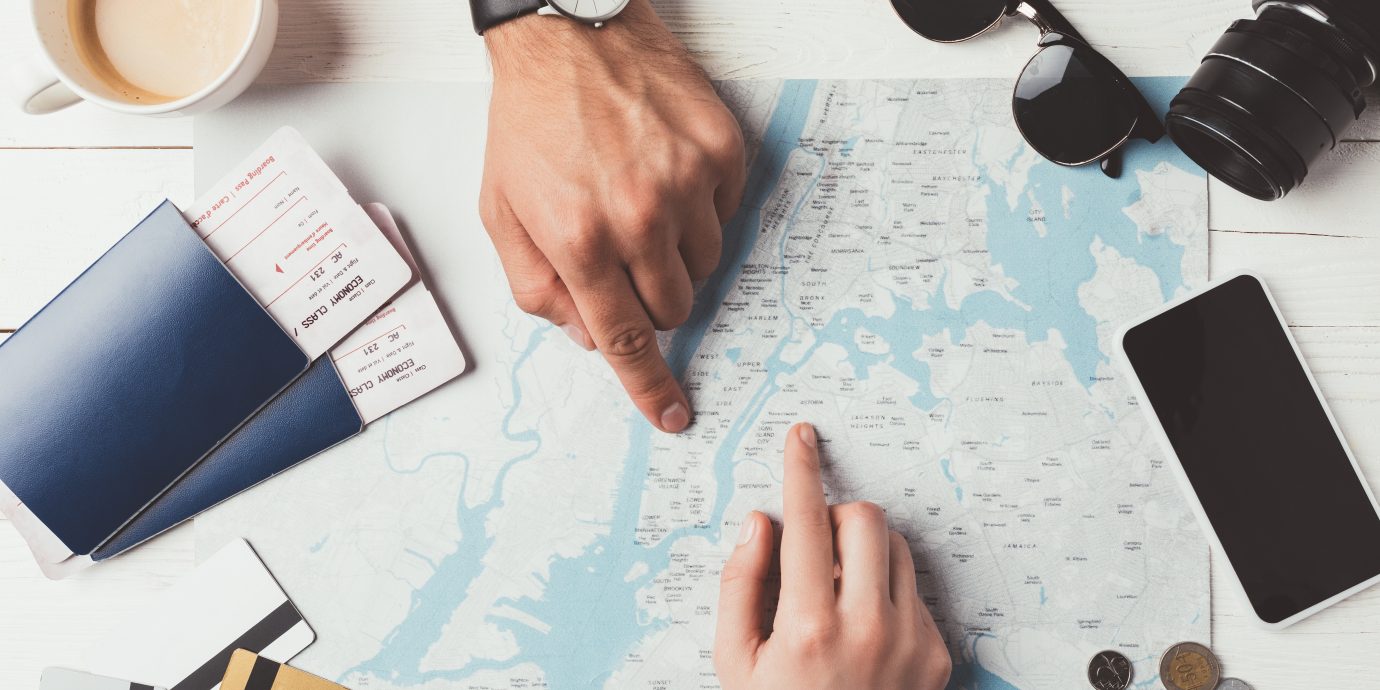
The Best Cities to Travel Cashless Around the World
Nothing quite puts a damper on a vacation like calculating exchange rates. Luckily, there are tons of places around the world where it’s easy to travel cashless. From Stockholm to Sydney, here are the best destinations to flex that plastic.
In collaboration with Visa
Chelsea is Brooklyn-based travel writer, editor, and photographer. When not home eating her way through NYC, she's gallivanting across the globe, sailing the coast of Croatia or hiking the peaks of Peru. Her superpowers include booking flight deals and sleeping in small plane seats.
See recent posts by Chelsea Bengier
It’s not news, but it deserves saying: credit and debit cards are more secure than cash. Not only can you set up travel notices to monitor for fraud, you also don’t have to worry about pickpockets or time or fees associated with exchanging currency. Visa has a Zero Liability Policy* to help protect you against unauthorized charges on your account. Plus, many cards provide travel insurance, including auto rental coverage, trip cancellation refunds, travel accident insurance, and even reimbursement for lost, damaged, or delayed luggage.
Another huge benefit to using your plastic is how much money you can save. Debit and credit offer you a competitive exchange rate compared to cash, and, with your card, you can save even more by paying local currency to avoid charging a conversion fee. Also, according to Visa’s 2018 Global Travel Intention Study, around 87 percent of travelers end up with leftover cash after a trip abroad, but only 29 percent exchange it back to their home currency—meaning they’re coming home with a suitcase full of useless bills. With credit and debit cards, you can set alerts to track how much you’re spending, so you won’t blow your budget, while the best travel rewards cards earn you points (a.k.a. free money) for each purchase you make, which can be redeemed for flights, hotels, car rentals, and more.
To see where you can get the best bang for your buck, check out these 10 card-friendly destinations.

New York City
With those striking skyscrapers, zooming cabs, and effortlessly chic city-slickers, Manhattan is cinematic in its own right. It’s comes as no surprise, then, that there are tons of trendy indie theaters and star-filled film festivals in the Big Apple. Many NYC movie theaters now offer e-tickets that you can buy directly through your card-activated account while others serve special menus and cocktails at your seat, which will automatically charge you for your purchases so you don’t have to wait for the bill at the end of the show. Talk about the best kind of dine and dash.
RELATED: The Best Walking Shoes for Women
Book Hotels in New York City
London is one of the easiest places to visit without pounds in your pocket. Transportation is one tap away as the Tube, trams, and buses operated by Transport for London are all cashless. Also, black cabs accept credit and debit and won’t take a surcharge for using a card. Walk along any of the high streets—such as Oxford—and you’ll notice shops and pubs with cashless signs. Some watering holes even have apps that allows you to order and pay with the click of a button. Heck, even buskers and street performers have QR codes and PayPal options.
Book Hotels in London
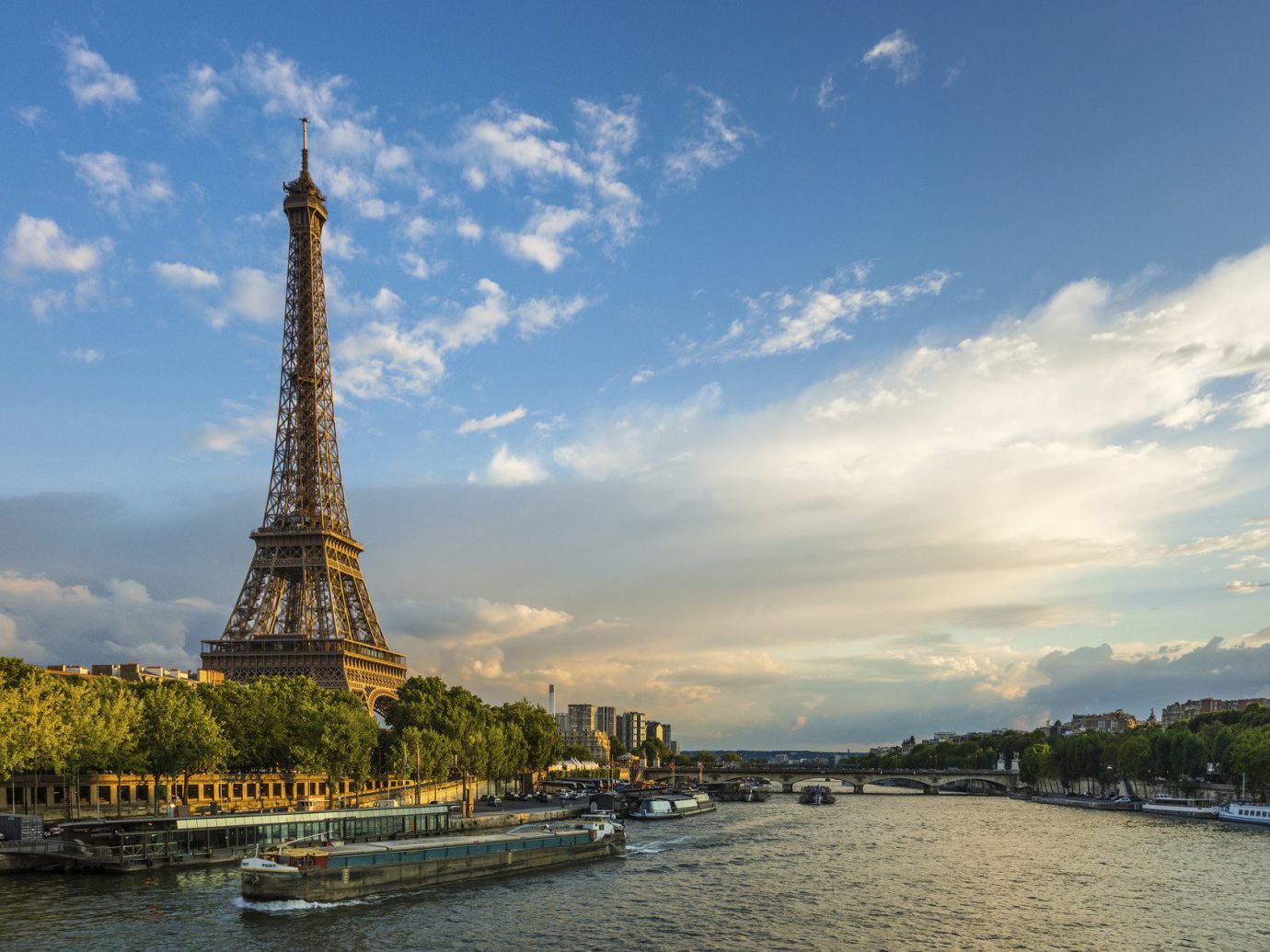
Looking for a party? Paris has tons of year-round festivals to explore—and many of them now have cashless options. For example, at the culinary events that invite the city’s top chefs to lead tastings, cooking demonstrations, and dozens of pop-up food stalls, you can try a variety of dishes and drinks using a pre-loaded ticket. Similarly, almost every music festival in Paris now offers contactless wristbands to buy food, drinks, and band merch so you never have to worry about your wallet getting lost or stolen while dancing in the crowd.
RELATED: 3 Days in Paris: Our Ultimate Guide
Book Hotels in Paris

Stockholm is making headlines lately as it could be the first city to become completely cash-free. According to Sweden’s central bank, Riksbanken, only 13 percent of payments in the country are made with cash as notes and coins start to be phased out. If the weather is nice while you’re in town, rent a bike or take a ferry around the 14 islands that make up the coastal capital. You’ll pedal along cobblestoned medieval streets, lush parks, and charming waterfront promenades lined with floating bars begging for a happy hour pitstop.
Book Hotels in Stockholm
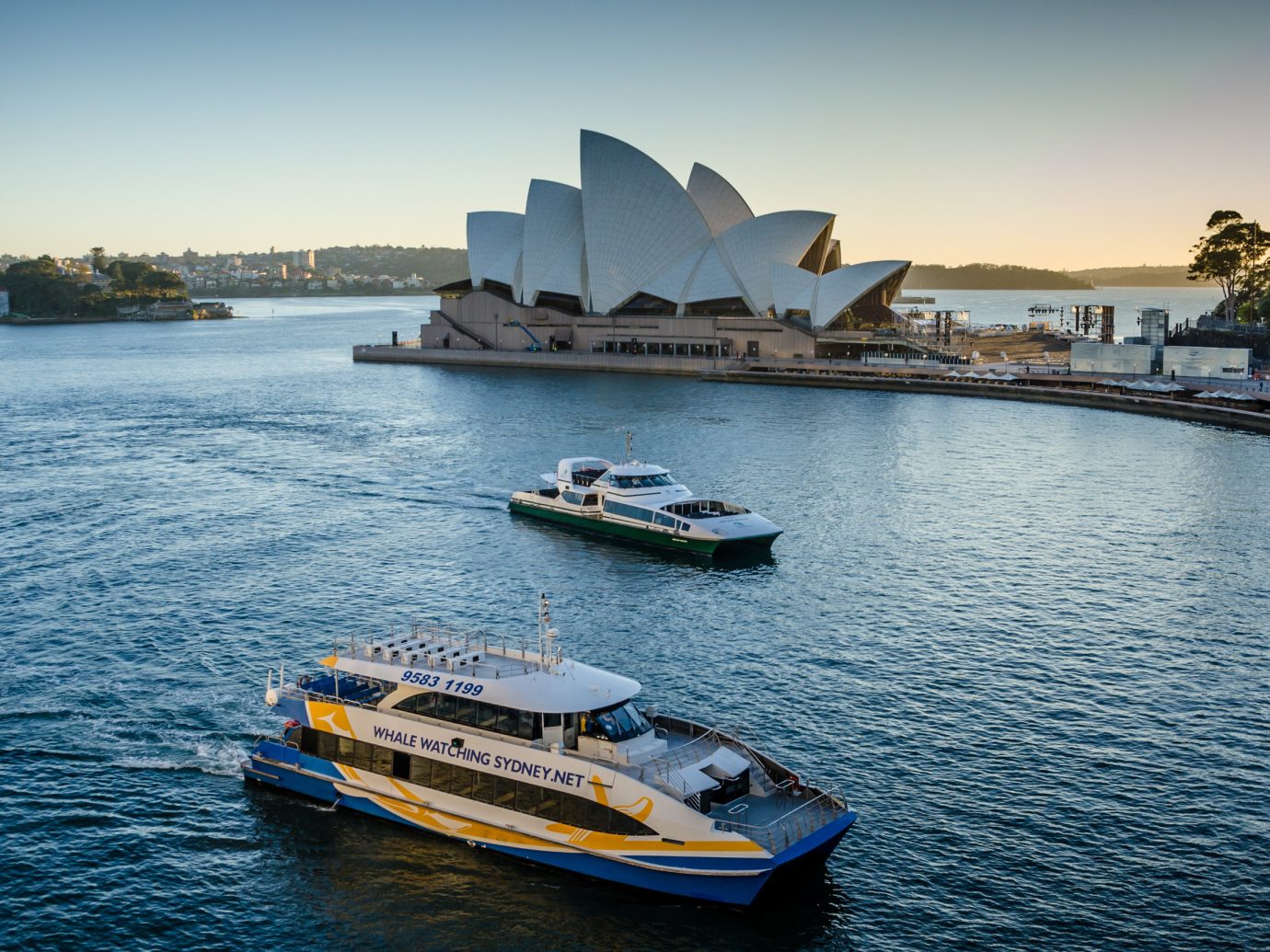
Sure, the Opera House and the Great Barrier Reef get all the attention when it comes to Australia, but Sydney has a lot more to offer besides its typical tourist attractions. The city is a major foodie hotspot—especially in terms of fresh seafood as well as Asian-inspired cuisine thanks to a flux of expats from Singapore, Hong Kong, and Tokyo. Save room to eat your way through the card-only Asian food stands that line Kensington Street in the hip Chippendale neighborhood.
RELATED: 15 Cool Things to Do in Sydney
Book Hotels in Sydney

Canada is also at the forefront of the cashless movement, with more than 60 percent of the country’s purchases being made via credit card. It’s easier than ever for New Yorkers to drive to Toronto, just two hours from Buffalo, since the toll booths at Grand Island became cashless (so you can speed right through without hitting traffic). Once in the city, grab tickets for a concert or sports game at Scotiabank Arena, home to the Toronto Maple Leafs ice hockey team and the Toronto Raptors basketball team.
Book Hotels in Toronto

Seoul has always been futuristic and tech-friendly, and it’s even more so now thanks to the introduction of T-Money. These prepaid cards can be used in taxis, trains, public transit, and more than 30,000 convenience stores around South Korea. Any leftover or loose change can be deposited back onto the card as well. Spend that dough in the Samcheong-dong district, which is choc-a-bloc with eclectic art galleries, indie boutiques, and al fresco restaurants. Then, head a few streets over to the Bukchon Hanok Village , a hilltop maze of centuries-old Korean homes that have been preserved and reopened as artist studios, tea rooms, and tiny museums.
Book Hotels in Seoul

Oktoberfest may be Munich’s main draw, but beer isn’t the only thing this German city’s got going for it. There are a handful of historic sites to see, especially come spring when the weather warms up. The city is home to grand 18th-century palaces, priceless art museums (a few of which are housed in former royal residences), and sprawling public gardens with outdoor beer gardens and lakefront lawns ideal for a sunny afternoon picnic.
RELATED: 8 Incredible Places in Germany to Add to Your Itinerary
Book Hotels in Munich

Following the Crazy Rich Asians fanfare, all eyes are on Singapore’s glam lifestyle. Big-spenders will want to splurge on one of the high-end hotels dominating the city skyline—especially when these swanky stays come with rooftop terraces and decadent spas. Just don’t forget to see the main attractions: during the day, stroll through the Singapore Botanic Garden , which is celebrating its 160th anniversary, and the Gardens by the Bay at night, when the tall, plant-like structures twinkle in a rainbow of lights.
Book Hotels in Singapore

Reykjavík
Massive glaciers, black-sand beaches, thundering waterfalls, adorable Icelandic ponies—it’s no wonder why Iceland has captured so much attention in recent years. Make the colorful capital of Reykjavík your home base, and bed down in one of the city’s minimalist-chic hotels. Then, spend a morning browsing the boutiques along the Laugavegur shopping strip (keeping in mind that some stores and bars don’t accept any cash, even tips.)
Book Hotels in Reykjavík
*Visa’s Zero Liability policy does not apply to certain commercial card and anonymous prepaid card transactions or transactions not processed by Visa. Cardholders must use care in protecting their card and notify their issuing financial institution immediately of any unauthorized use. Contact your issuer for more detail.
- 12 Packing Hacks You’ll Live By
- America’s Best Long Weekend Getaways
- 22 Travel Accessories to Buy on Amazon This April
All products are independently selected by our writers and editors. If you buy something through our links, Jetsetter may earn an affiliate commission.
Become a Jetsetter.
Use our insider connections to know where to go and what to do.
Thanks for Signing Up!
Related Tags
Explore more.
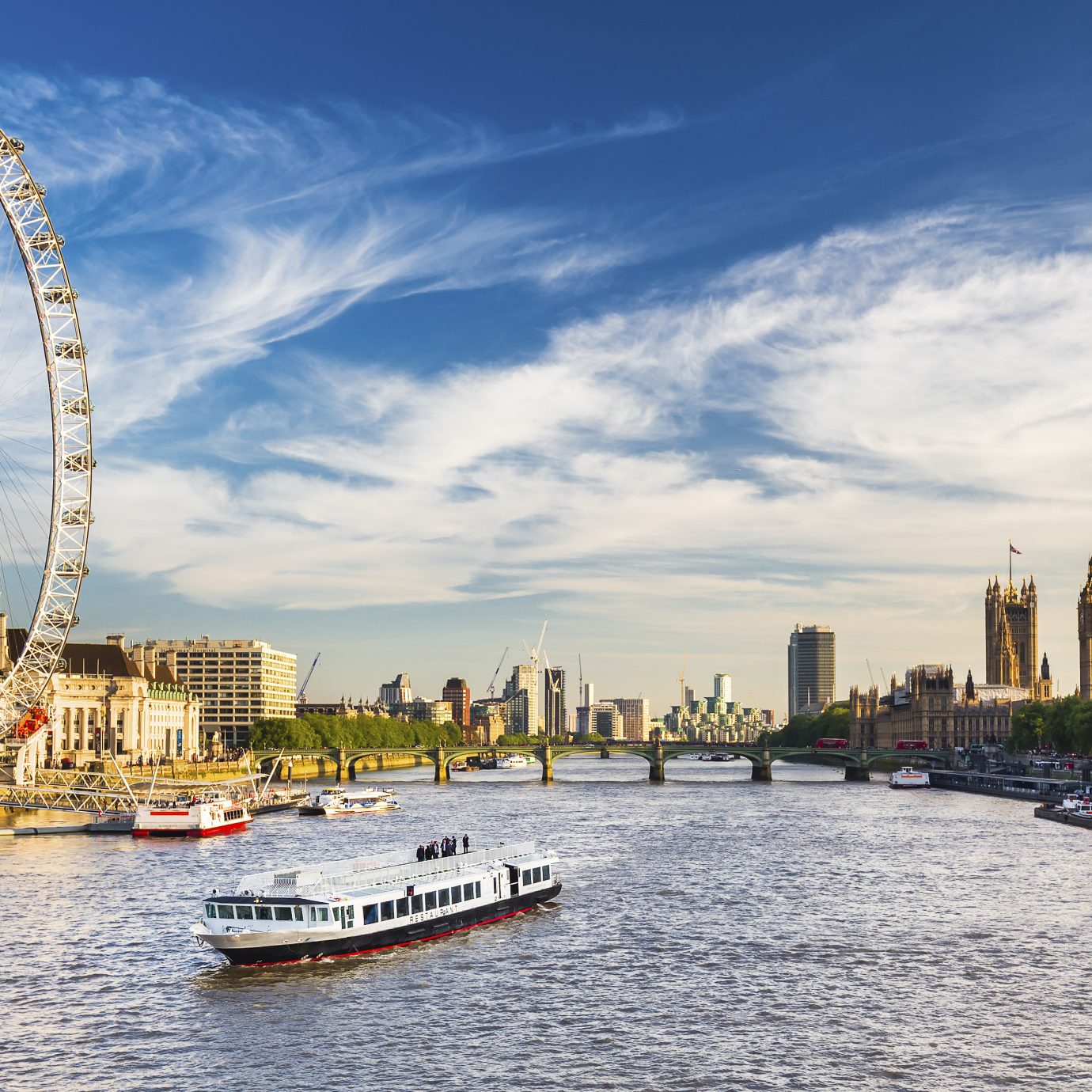
These 7 Long-Weekend European Getaways Are Completely Doable from the U.S.

The Montague On The Gardens
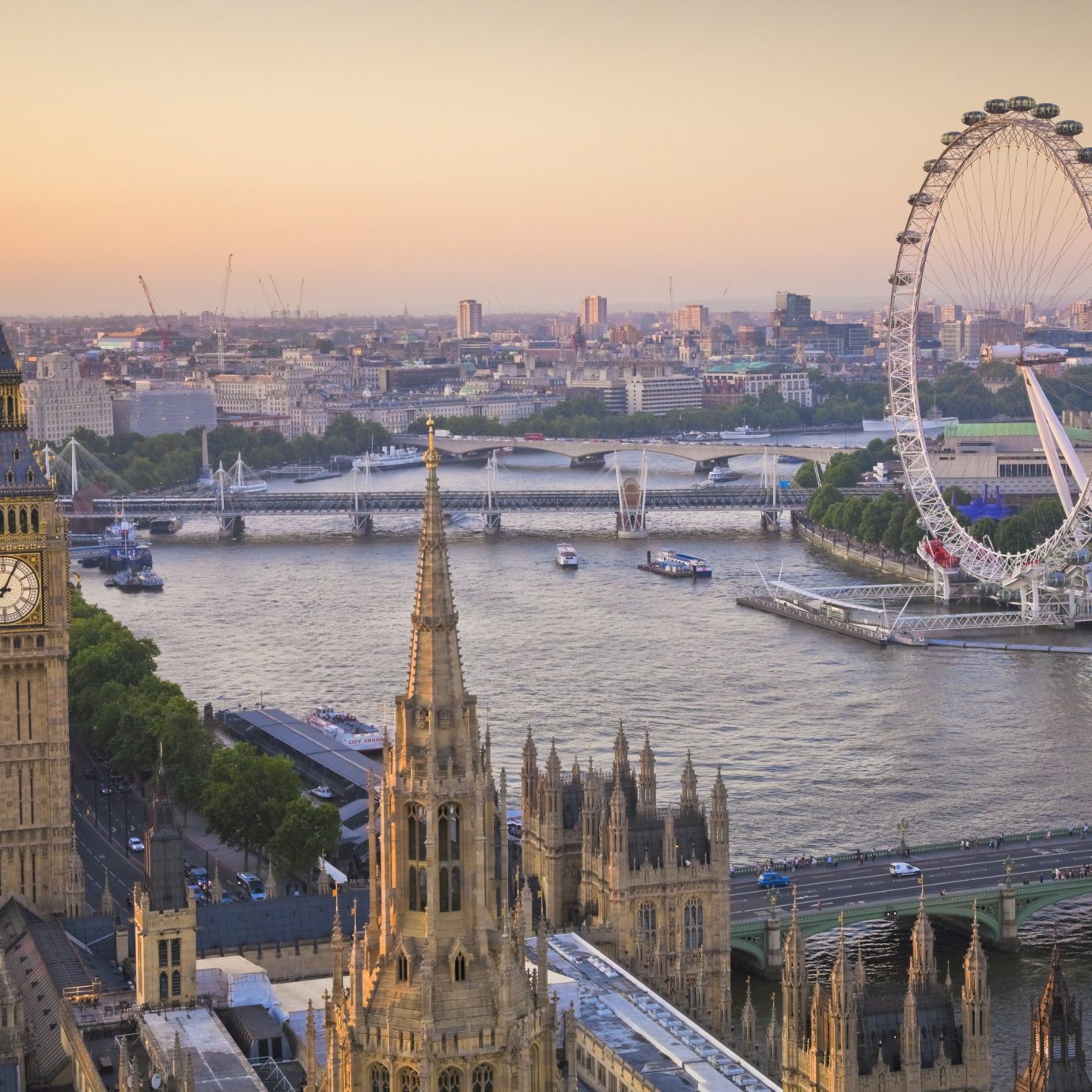
3 Days in London: Our Favorite London Attractions for a Long Weekend

Hilton London Bankside

Traveling Cashless: The Most Digital-Friendly Destinations in the World
- April 11, 2024

It’s better and safer to carry cards than cash while traveling. About 46% of travelers admitted that they have fallen victim to theft or robbery while traveling, and almost half lost cash .
Avoiding this fate is why many seasoned travelers advocate for going cashless, prioritizing security above all else.
This post will discuss the concept of cashless societies and its benefits. Also, we’ll share the top destinations for travelers who prefer using their cards and digital wallets over cash.
Why should you travel cashless?
Here are compelling reasons why you should join the cashless wave. A cashless lifestyle offers numerous benefits worth considering.
Better security
You know how it is when you go to the ATM. You always look over your shoulder to ensure no sketchy person is hanging around. It's a relief that we have so many digital payment options. Now, you don't need to carry cash all the time. That means less chance of becoming a target for muggers or thieves.
Convenience
Who wouldn't appreciate saving time, especially when dealing with banks? Fortunately, nowadays, people have numerous digital options that allow them to manage transactions without cash or needing to be physically present.
Moreover, you can purchase overseas in various currencies with most debit cards without incurring foreign exchange fees. On top of that, you can also conveniently pay merchants by scanning or tapping your debit or credit card.
Suppose you went out for lunch or dinner at a restaurant in a small town you visited, and there’s no ATM to dispense cash. You can tap your card on the merchant’s handheld POS system to pay for your meal.
Using digital payments like credit cards can save you money. You get rewards points from your bank that you can use later on. And some credit cards will give you airline miles when you use them.
Plus, the companies that run credit cards and digital payment apps often partner with stores and restaurants. Because of those partnerships, you can find extra discounts or promo deals when you pay with your card or app instead of cash.
Top Destinations for Cashless Travelers
Cities like China, Singapore, Seoul, Stockholm, and Reykjavik plan to go completely cashless. Many wonder what that means for retailers, online stores, and companies that process payments for them.
These cities don't even come close to being the whole world, but merchants that take all kinds of payments might need to get used to more alternative options besides cash.
No countries have entirely ditched cash yet. That said, more and more places are looking to do so in the next few years. But for now, if you want to travel cashless, consider the following destinations.
Norway is leading the way towards a cashless society in Europe. The Nordic countries are generally ahead of the curve regarding cashless payments. This phenomenon is likely because people in these countries highly trust financial institutions. They are also very open to new digital technologies, even older generations.
According to the World Bank, nearly 98% of Norwegians own a debit card. Over 95% of people use mobile payment apps for purchases. And the rate of using physical cash for point-of-sale transactions is only 3-5%, one of the lowest in the world.
In 2021, Norway's central bank started looking into options for a digital currency. This could push society even more towards being cash-free. However, going completely cashless isn't without concerns.
Sweden was the first European country to start using banknotes. But now, they might be among the first to stop using them. Sweden is pushing everyone to go cashless. The government encourages it, and stores can refuse cash if they want to.
On top of that, over 98% of Swedes have a debit card. Sweden is at the top of the list for mobile payments, too. They are fully embracing this cashless future.
Their central bank, the Bank of Finland, predicts the country will be cashless by the end of 2029, just like their neighbors in Scandinavia.
Almost everyone in Finland has a card— 98% have a debit card , while 63% have a credit card. Cashless transactions there were expected to hit almost 60 billion euros this year. And over 80% of Finns prefer to pay with debit when shopping in person at stores.
China may be a little behind Finland and Sweden in electronic payments now, but you must remember China has over a billion people. So even small increases in mobile payments mean hundreds of millions of more people switching to digital.
Chinese consumers have fully embraced mobile payments, with QR code scans via smartphone apps becoming ubiquitous. From groceries to utility bills, most transactions are now conducted digitally.
This trend is unsurprising, given China's dominance in online shopping. It has an eCommerce market exceeding $600 billion annually and growing by over 25% yearly, solidifying its position as the global leader in internet sales.
This year and beyond, cash will only account for about 1.6% of store purchases in Hong Kong . This figure represents the lowest percentage in the Asia Pacific region, declining from 9% in 2019. While credit cards dominated as the most popular online payment method in 2019, digital wallets are forecasted to surpass them and claim the top spot by 2024.
This is because more people are shopping online now than ever before. However, the government also recently gave out billions in spending vouchers to help out during COVID-19, which also encouraged more digital payments. Stores said people used the vouchers and kept using things like AlipayHK and WeChat Pay instead of cash.
Note, however, that places like wet markets and taxis still mostly prefer cash.
South Korea
Although fewer people live there, South Korea is more cashless than China. Everyone in South Korea uses credit cards and mobile payments for everything. Most places already have technology nationwide, allowing them to go entirely cashless.
In 2023, the annual value of card transactions in South Korea's cards and payments market was estimated at $991.2 billion . It's expected to experience a compound annual growth rate (CAGR) exceeding 7% from 2023 to 2027. South Korea boasts a well-developed card and payment industry, with its consumers extensively utilizing card payments.
Factors driving this adoption include a huge banking population, heightened financial awareness, banks offering various customer incentives, and governmental initiatives promoting cashless payment methods.
The United Kingdom
More than 50% of consumers in the UK use digital wallets. The main reason is convenience—digital payments allow people to leave the house without carrying a bulky wallet.
Almost half (48%) of those who regularly use digital wallets use them to store plane, train, or bus tickets, while about a third utilize them to store event tickets or loyalty cards.
Netherlands
The Netherlands is leading the way in digital payments, with nearly everyone owning a debit card— about 37% of the population . Over half of all transactions last year were made by tapping a card or debit.
This trend suggests they're nearing a cashless society. While cash is still used occasionally, the country's progress in contactless and online payments is remarkable.
Image by Clay Banks on Unsplash
Cashless Travel Offer Unlimited Opportunities
As technology evolves and digital payment options become even more ubiquitous, cashless travel will undoubtedly become the norm, offering travelers a seamless and efficient experience wherever their adventures take them.
So pack your bags, leave the cash behind, and embark on your next journey confidently, knowing that the world's most digital-friendly destinations await your exploration.
Sign-up for Our Email Newsletter
Find a luxury hotel & book with exclusive perks.

- Luxury Partners
Villa Lala — Romantic Boutique Hotel in Puerto Vallarta

Cabo Platinum - Cabo San Lucas Luxury Villas, Yachts & Concierge Services

Villa Firenze - Costa Rica Luxury Villa Rental

JUP - Personal Service for Buying and Selling Real Estate in Jupiter, Florida

Polaris Slingshot - A three-wheeled sensation that re-ignites your love for driving

Rancho Valencia Resort & Spa - Rancho Santa Fe, California - One of the West’s most sought-after five star resorts

Tuscan Dream - Immerse Yourself in the Tuscan Villa Vacation Experience

Grand Hotel Portovenere - Cinque Terre - Discover this beautiful region of Italy!

Dude Ranchers Association - An all-inclusive vacation experience like no other

El Encanto, A Belmond Hotel - Santa Barbara, California - Experience timeless Californian glamor.

Grand Hyatt Kauai Resort & Spa - Poipu, Kauai, Hawaii - Beachfront Resort

Culture, Spirituality, and Wellness in Japan's Tochigi Prefecture

Blue Waters Resort & Spa - Antigua - A hidden gem nestled in a private bay on Antigua's northwestern coast with sunset views

A.M.A Selections - Luxury Villa Rentals throughout Europe

Live Aqua Beach Resort Cancun, Mexico - Adults Only, All Inclusive

Argentario Golf & Wellness Resort - Porto Ercole, Tuscany, Italy

Porto Zante Villas & Spa - Zakynthos, Greece - The leading villa resort in Europe
Luggage shop by size
ARE YOU READY FOR CASHLESS TRAVEL?
Travelpro Travel Expert Editor
Technology ,
Tips & Tricks ,
Travel Guide ,
Travel News
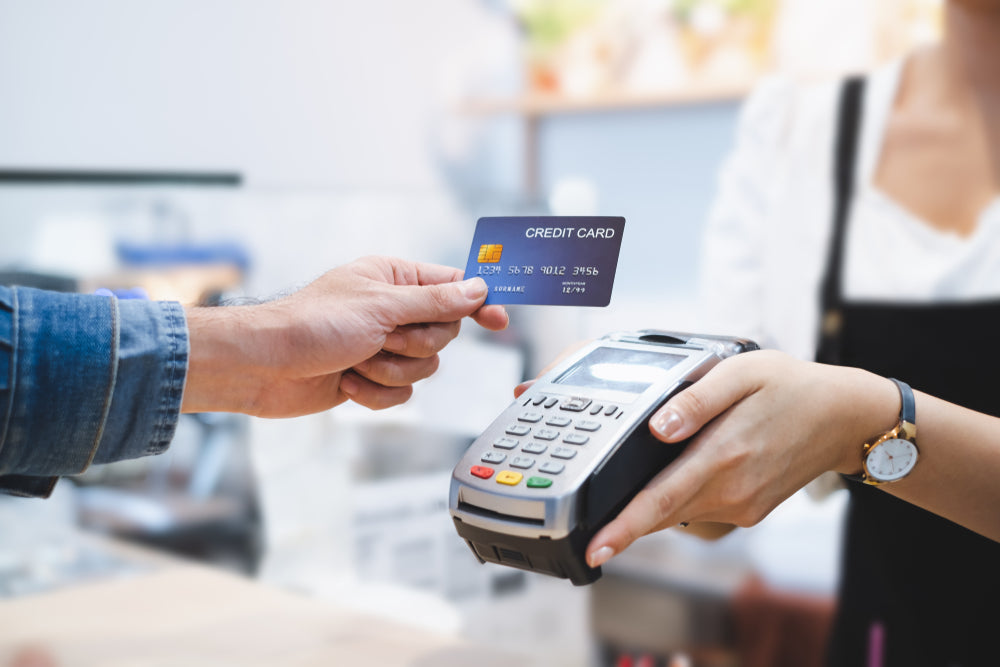
Several countries and even cities have become progressively cashless in recent years, making cashless travel more and more prominent. We even talked about contactless and cashless travel in a recent blog post, and we think it will continue to see fewer people paying with cash, instead using credit and debit cards, as well as alternative forms of payment like PayPal, Venmo, WeChat, and even Cash (the mobile app, not the currency).
With newer payment alternatives, the need for physical currency seems to be slipping in popularity. There are even several countries that are making the move to becoming a cashless society.
Sweden has already reported that 80 percent of their population are already using some sort of non-cash payment form , and they could be completely cashless by 2023. South Korea has similarly reported that 80% of all transactions are cashless . Australia believes they could go cashless in two years . And in China, ecommerce is expected to make up 11.6% of their GDP by 2022 .
Of course, we probably won’t see a cashless society here in the United States, since there are still laws in place that require merchants to accept cash, no matter how much they may not want to. Some cities, like Philadelphia, San Francisco, and Washington D.C., as well as the state of New Jersey, are making moves to ban cashless stores . That doesn’t mean you can’t use cashless or contactless payments, but it means that stores that want to deal in cash-only transactions will not be allowed to do so.
MAKING THE SWITCH TO CASHLESS TRAVEL
Cashless travel shouldn’t be that difficult anyway. There’s a very good chance that you already use credit cards and debit cards. And it’s not a great idea to carry a lot of cash with you when you travel, in case you lose it or it gets stolen.
At least when you lose a credit card, you can quickly get a replacement, and you’re protected from theft by the credit card network and/or your issuing bank. And you can even travel without a credit card in some cases, such as if you forgot your wallet. There are options like paying with Apple Pay and Google Pay, visiting businesses that let you tie your credit card to your account (e.g. Starbucks, Subway, etc. It’s not ideal, but you’re not stuck if you forgot your wallet or purse in your hotel room.)
You can also buy pre-paid credit cards that function like debit cards but are accepted as credit cards, and still have the same protections. The benefit of these is if your card gets stolen, you only lose a smaller amount of cash, not, say your entire $20,000 credit line.
Finally, traveling cashless overseas means not trying to exchange money at banks and currency exchange stands. You don’t have to worry if you’re getting the best exchange rate because the banks are taking care of it for you and already get one of the best rates available.
What are your thoughts about cashless travel? Are you ready for it? What kinds of apps and strategies do you have to keep your wallet light, but still give you plenty of flexibility to see the world? Tell us about your ideas on our Facebook page , or on our Twitter stream . You can also find us on our Instagram page at @TravelproIntl .
Photo credit: ING Nederland (Wikimedia Commons, Creative Commons 2.0)
Share on Facebook
Tweet on Twitter
Pin on Pinterest
You might also enjoy
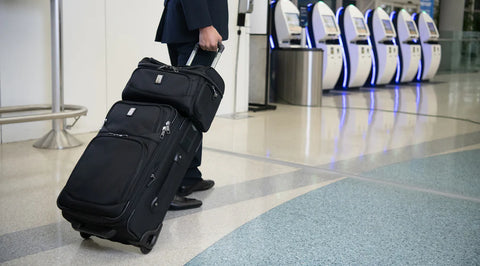
Tips & Tricks For Navigating an Airport Like a Pro
Travelpro Travel Expert Editor The Travelpro® Blog
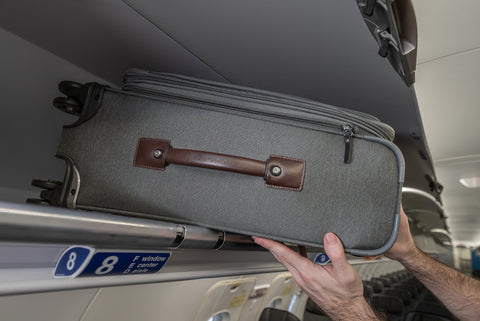
How to Board a Plane

Duffle Bags as Carry-On: Everything You Need to Know
- Global Citizen
- Money Works
- Global Issues
- Getting Around
- WU Partners
- Regional News
- Europe & CIS
- Middle East & Africa
- Asia & Pacific
Are You Ready for Cashless Overseas Travel ?
Are you planning your next big trip abroad? One of the first items you’d usually check off your to-do list is converting your cash to the local currency. However, you may soon realize you don’t need much cash abroad at all.
As technology advances in the digital payment space, you’ll likely run into cashless communities while traveling. Cashless societies are becoming the new normal, and many countries, like Norway and Sweden, are likely to soon totally eliminate cash as a payment method.
If you’re planning a trip abroad, you’ll need to ensure you have the correct funds to travel in a cashless area. You don’t want to miss out on buying souvenirs, eating at restaurants, and enjoying all your cultural activities. Below is a list of everything you need to know about how to travel cashless overseas, so you can still have the trip of a lifetime.
Why Are Countries Going Cashless ?
It’s becoming more common to see signs that read “No Cash Accepted” while traveling abroad. More and more countries are going cashless, meaning that food markets, clothing stores, hotels, and other businesses are forgoing cash as a payment method.
The ongoing pandemic helped usher this era along since contactless payments lower the risk of transferring germs. In fact, in 2020 nearly half of consumers preferred a contactless payment method. As technology advances, digital payments are becoming more secure and commonplace.
Sweden is leading the list of countries going cashless, and will likely eliminate cash by the end of 2023 to only accept digital payments. Cash transactions only accounted for 1% of Sweden’s GDP in 2019 , proving that cash has been on a stark decline the past few years.
However, in many areas of the world, not everyone has access to this technology, including some in the U.S. Many individuals are still underbanked or reliant on cash. Plus, the U.S. and other countries have laws that require businesses to accept cash as a form of payment.
So, before you travel to another country or region, do a little online research or talk to a travel agent about what forms of payment are accepted and not accepted.
How to Travel Cashless
As you plan your trip abroad, there are many things you’ll need to prepare for your trip , including having money to spend! Keep reading to learn about all the ways to go cashless to guarantee a smooth and memorable trip.
Carry an international debit card
One of the most convenient ways to travel cashless is to get an international debit card. This card functions just like any other debit card, but many offer rewards and discounts on certain transactions too. Also, if you need cash in a pinch, this card allows you to withdraw money from ATMs abroad.
Get a prepaid travel card
Prepaid travel cards allow you to make purchases abroad without worrying about international transaction fees. Also, these cards are locked into a currency exchange rate, so you don’t have to worry about daily fluctuations. You’ll purchase the card before your trip and load it with funds up to the maximum amount allowed. You can also use it at ATMs, but there may be fees or withdrawal limits.
Carry a travel credit card
Travel credit cards are very helpful if you’re a frequent traveler. They earn points for every dollar spent, and earn extra points attached to specific travel purchases. You can earn points towards flights, hotels, car rentals, and cash rewards. Travel credit cards also do not charge any international transaction fees, so you can use them freely without fees adding up.
Download & use a digital wallet app
There are many advantages of digital wallets, including its popularity worldwide. Since digital wallets have become the new normal across the world, you’ll likely see tap-and-go payment terminals everywhere. You’ll download a digital wallet app—like Apple Pay, Samsung Wallet, or Google Pay—which connects to your bank account, debit, or credit card. Then, just carry your phone and tap and pay at grocery stores, restaurants, and souvenir shops. Be aware though, unless you use a multicurrency digital wallet app or hook up your digital wallet to a credit card that doesn’t charge foreign transaction fees, you may still end up paying for currency conversion.
One added advantage, though, is that you can manage your money directly from your digital wallet app so you can monitor purchases and keep track of your spending more easily throughout your trip. This digital paper trail helps guarantee the funds in your account, in comparison, to cash getting stolen.
Pay with crypto
Cryptocurrencies, although still new, allow travelers to avoid several fees. Instead of dealing with your bank’s currency exchange rate or international fees, most cryptocurrencies don’t require any conversion at all. Crypto is not widely accepted across the world, but it is becoming more popular, so you may see it as a payment option at some modern stores and restaurants in certain areas of the world.
Transfer money ahead of time with Western Union
It doesn’t hurt to keep a little cash on hand while traveling, just in case! If you prefer money in your hand, then you can always send cash ahead of time, so it’s waiting for you in the local currency when you arrive. Through Western Union’s app , you can reliably send a money transfer to over 200 countries. You’ll be notified when your money arrives, and it will be waiting for you to pick it up at the Western Union agent location you choose near your destination.
Similar Blogs
How are currency exchange rates determined, what causes exchange rates to change, how often are exchange rates updated, protecting your finances: how to recognize and avoid tax scams.

- Customer Care
- Intellectual Property
- Terms & Conditions
Cookie Settings

Is Cashless Travel The Future Of Tourism?
20 April, 2020

We are bound to technology in a way humanity has never seen before. This affects everything we do, including trade and, more specifically, cash. With the rapid integration of digital payments and wallets in our daily lives, will cashless travel be the future of tourism?

T ourism Tourism has seen its fair share of changes in the industry – from the growing power of social media to the penchant for solo travel – all of which massively influence our behaviour. A recent, somewhat controversial drift has been making headway in the past decade or so: cashless payments. We gaze into a future of travel where the need for currency exchange and scouring for ATMs may no longer be necessary – and this future is much closer than we think. After all, the cashless economy is already integrated in everyday life. We use Oyster cards on the tube and enable Apple Pay on our phones. What’s more, in light of the current pandemic, some ATM machines are being closed or come with warnings that advise the public to avoid physical cash to reduce the spread of the virus. This raises questions around hygiene and the general cleanliness of using coins and notes which have been shared by many before – it’s an issue that seems more pressing now than ever.

The first contactless cards were issued in the UK in 2007 (with phone-enabled payments following soon after, linking bank cards to handheld devices), aligning our digital payment infrastructure with new technologies. Meanwhile, online shopping is more accessible than ever before. In Sweden in 2018, cash accounted for just two per cent of transactions, and predictions go that it will drop to just half a per cent by the end of 2020. There’s a growing market for cashless travelling, especially among jetsetters who no longer want to carry much more than their bank card and mobile phone on their journeys. Travellers can now book an entire trip abroad with just a few taps on a keyboard – the flights, the accommodation, even activities. Yet, like many technological advances booming quicker than we can blink, there are debatable aspects of a completely cashless society. As we move forward with technologies that eliminate the need for physical cash in our pockets, some parts of the travel industry could be hit hard.
The pros and cons of a cashless economy

Low-waste initiatives
Put simply: a cashless economy is a little greener. Printing physical banknotes and manufacturing coins use a great amount of electricity, energy and materials; by keeping everything digital, a cashless society would have a positive environmental impact and helps us protect Mother Earth.
Supporting local
It’s no guarantee that every destination will accept credit cards and online payments – especially outside metropolitan areas. Small, local businesses may not be able to afford the added expenses which come with digital payment systems, thus making it difficult for them to adapt to the rapid technological changes. Traditional artisanal stores or handicraft markets, many of which rely on tourists, may struggle to get on board and therefore suffer the most from cashless tourism.

Hassle-free travel?
It’s won’t come as a surprise for travellers that, in many countries, the tourist can be the target for pickpockets and conmen. Having something traceable, redeemable and block-able like a bank card can be better when it comes to protecting our money. Meanwhile, advances in face, voice and fingerprint technologies allow for transactions to arguably be more secure. Some banks and cards even offer special insurance policies for travelling which may cover issues with luggage, trip cancellations and accidents as well as rewards for spending – an added bonus.
A cashless society helps us to bid farewell to confusing mental equations around exchange rates and having to search for the nearest ATM machine on Google maps, too. It’s also worth asking whether anyone actually likes exchanging coins and cents after their holiday, or spending the last few dollars for the sake of it? Didn’t think so.

Privacy issues
How many times have we logged in our personal information into an online form? Data collection is an unprecedented issue in today’s society and it forces us to imagine a life where absolutely everything is recorded. It may not necessarily be a disastrous thing – data can be great should we need to keep records of money spent on trips and the like. Nevertheless, we put a lot of trust in those little screens. While digital security may protect us from pickpockets, scammers are also very much online. Controversy also lies in whether our spending records or online behaviour are used to target our purchasing power. When we rely so heavily on technology, we give away some of our control.
Today’s society has made it near impossible to function without an online presence in banking and monetary transactions. A cashless travel trend is on the rise as a result of advances in paper-free payments and online purchases. We need to ask how older generations and smaller businesses will cope and adapt to these changes in how we move and spend money. Yet there is a lot to be hopeful for, including less hassle when travelling and the ability to track our spendings. While many trends come and go, a cashless society is one that feels inevitable in our technology-driven future. E-wallets are here to stay, both at home and abroad.

Sign up to our newsletter
Get your weekly dose of armchair travelling, straight to your inbox
- © 2012–2024 SUITCASE Magazine, All rights reserved.
The Straits Times
- International
- Print Edition
- news with benefits
- SPH Rewards
- STClassifieds
- Berita Harian
- Hardwarezone
- Shin Min Daily News
- Tamil Murasu
- The Business Times
- The New Paper
- Lianhe Zaobao
- Advertise with us
BRANDED CONTENT
Cashless payments take flight: how cash alternatives could change post-pandemic travel, bank experts share how paying with cashless alternatives can provide travellers with ease, security and benefits.
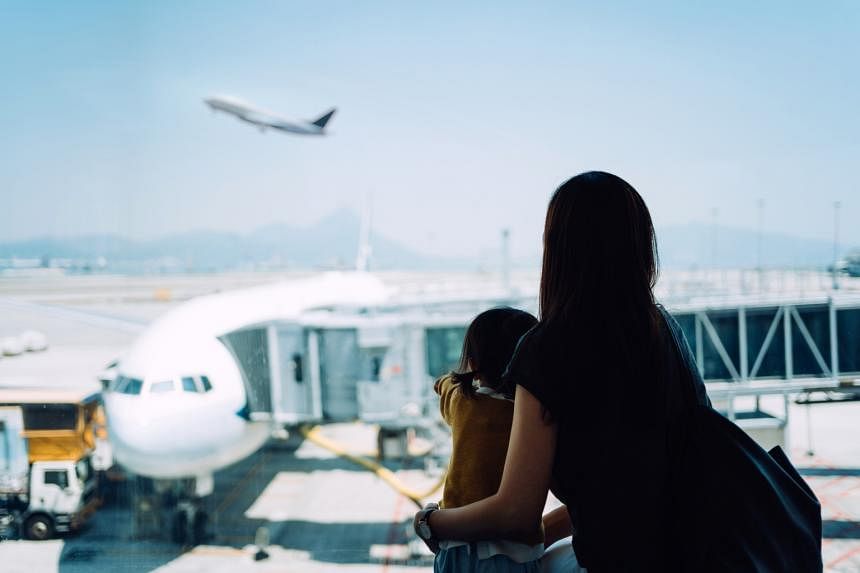
Remember the routine before your holidays pre-Covid? You withdraw cash, make a trip to the money changer, and exchange for a different currency before your flight.
With the pandemic driving a global surge in digital payments, preparing for your next trip can be much simpler – and safer.
In its 2022 study, UK-based market research firm YouGov found that nearly one in three (29 per cent) consumers in Asia-Pacific prefer to pay using debit or credit cards when they travel.
Another 7 per cent said they are keen on using multi-currency digital wallets when travelling.
There is a growing preference for digital payments, observes Mr Tan Min Yeow, 49, head of cards and payments, UOB. He shares that the number of people in Singapore who signed up for its travel or multi-currency cards doubled in the period of October and December 2022, compared to the same period in 2021.
There are still advantages to using cash, acknowledges Mr Tan. For example, people may be less likely to overspend because of impulse purchases.
Cash could also be perceived as less risky to some consumers as it can’t be compromised or subjected to identity theft and compromised personal information, he says.
“But having said that, the future is still cashless payments, and financial institutions are already putting in place steps and procedures to alleviate such concerns,” Mr Tan says.
The future is still cashless payments, and financial institutions are already putting in place steps and procedures to alleviate such concerns (of security).
A focus group study of 1,000 cardholders in Singapore, conducted by payment technology company Mastercard and UOB in the third quarter of 2022, found that three in four respondents preferred the use of credit cards and multi-currency cards for payment overseas.
Those leaning towards cashless payments likely prefer the convenience, perks and safety.
For example, UOB customers can set their a transaction notification alert ranging from as low as $0.01 to over $5,000.
Adds Mr Tan: “They will be notified of transactions immediately, and can take action to report any unauthorised deductions from their cards.
“In our all-in-one banking app UOB TMRW, there’s also a feature that they can use to temporarily or permanently block and replace their UOB Card, when required.”
Around the world with less cash
Cashless payments are gaining ground globally. In Singapore, three in five consumers said they tried going fully cashless during the pandemic, according to a Visa 2022 study.
But should you go cashless when travelling abroad? Mr Tan Min Yeow, head of cards and payments, UOB, shares some pros and cons of paying with plastic.
Convenience: Paying via a credit or debit card is more convenient than carrying stacks of cash. You can also track how much you spend easily using your mobile banking app.
Security: While carrying a card instead of cash may help to reduce the risk of a robbery, travellers should be aware of the potential issues of paying via cashless methods too.
This includes concerns such as identity theft and compromised personal information, which can happen when you give out your card details and personal credentials to scammers unknowingly.
Benefits: You can earn rewards such as airline miles, points or cashback depending on the credit or debit card you pay with. Reward points can be redeemed for items such as shopping vouchers, or used to offset purchases.
Costs: Be aware of hidden costs. For example, there will be foreign transaction fees involved when you pay in other currencies using your credit or debit card. You will incur a fee when you withdraw cash at overseas ATMs too.
If you forget to pay your credit card bill or did not pay in full, you will also incur late fees and interest charges.
Emergency: When you need cash urgently, you can call your bank to increase your credit limit for your credit card. This allows you to access funds easily, especially in an emergency.
Perks of going cashless
Customers earn rewards such as airline miles with the UOB PRVI Miles Card or KrisFlyer UOB Credit Card. “They also enjoy special travel privileges such as airport lounge access or hotel discounts.”
Multi-currency accounts, such as UOB Mighty FX, are another option. Ms Jacquelyn Tan, head of group personal financial services, UOB, shares that customers can use UOB Mighty FX via the bank’s mobile banking app UOB TMRW to convert currencies at comparative and transparent rates anytime.
The multi-currency account offers foreign currency exchange rates for 11 major currencies, including Singapore dollars (SGD).
Customers can use the UOB Mighty FX Debit Card when shopping overseas, or convert their money to a foreign currency and withdraw it at any Mastercard-enabled ATM if they need cash.
“You can still convert the currencies at the airport or at your destination country, as long as you have access to UOB TMRW,” says Ms Tan.
There will be a flat fee of $5 (or the foreign currency equivalent) charged for each cash withdrawal overseas.
By the numbers
- 1 in 3 Nearly one in three consumers in Asia-Pacific (29 per cent) prefer to pay using debit or credit cards when they travel, reported YouGov last year
- 167% Overall spend for travel categories in the last quarter of 2022 increased by 167 per cent year-on-year, says UOB
- 9 in 10 In a focus group study conducted by Mastercard and UOB last year, nine in 10 cardholders say they plan to travel this year
Customers can also set a preferred rate for specific currencies and be alerted when it becomes available via Mighty FX, says Ms Tan. “They can use the ‘Convert and Alert’ function to automatically convert their money when the preferred rate is met. The app will then notify the customer that the transaction has been completed.”
“That way, travellers won’t have to worry about carrying too much cash around when they are abroad. They can also easily track their purchases on the UOB TMRW app, which will alert them should there be any duplicate card transactions,” she says.
The Future of Finance series explores how digital solutions and insights can empower individuals and businesses in a rapidly changing world, to create a more sustainable future.
This is the 13th of a 15-part series in partnership with

Join ST's Telegram channel and get the latest breaking news delivered to you.
- Travel planning
- The Future of Finance
- Branded content
Read 3 articles and stand to win rewards
Spin the wheel now

Turn your travels, events
& spending into.
JOIN WCASHLESS
Your ultimate travel companion. Use everywhere you see the wcashless sign
Use our cashless, wristband & contactless payment solutions. Reduce the amount of money you carry or need to transfer. click to get wcashless

wcashless pay with wandoOs ©

Scan the QR to Become a wcashless member and enjoy all the benefits of our program

powered by wandoOra Services
KEY FEATURES
Around town or on your travels. Enjoy contactless services
Imagine the possibility of having one App & Service, that can pay for goods and services, open your hotel room door or be your ticket for at an Event.
Top Up and stay safe. Your global travel currency is here
So you are going travelling. You don't know how much money to take - No problem. You can top up your account from anywhere without the need to transfer money or go through expensive use of your card with fees while away.
Use at approved locations, Events & Festivals
There is a growing list of Bars, Restaurants and other favorite locations that are using wcashless. Use wherever you see the wPay sign.
Find wcashless in use at many Events & Festivals.
View & Manage balance & transactions
You are always in control. Wristband payments or Double tap to use your phone.
Our App & Wallet will always help you know your balance, see your transactions and top-up or get refunds wherever you go.
wandoOra Services brings WRISTBAND & CASHLESS Solutions for Events, Festivals & Venues....
The perfect partnership

Get your Tickets on INSIDER-TICKETS.com and create the perfect partnership with wcashless , wristband & contactless payments

Join wcashless today
Your travels & events just became easier

click to get wcashless
What are wandoOs
The future of cashless travel & events is here.
We have developed a cashless payment system for travelers. You will find an increasing number of bars, restaurants, small businesses and events that are using our wcashless in their establishments.
No longer the need to transfer cash, incur credit card fees or wait in line at that ATM.
wandoOs are travel coins for cashless use. You will be issued with a wristband or by using the wcashless Digital wallet while in attendance to one of many events we support.
All you need do, is top-up your wandoOs and enjoy your time.

Foreign visitors to China can finally go cashless like locals
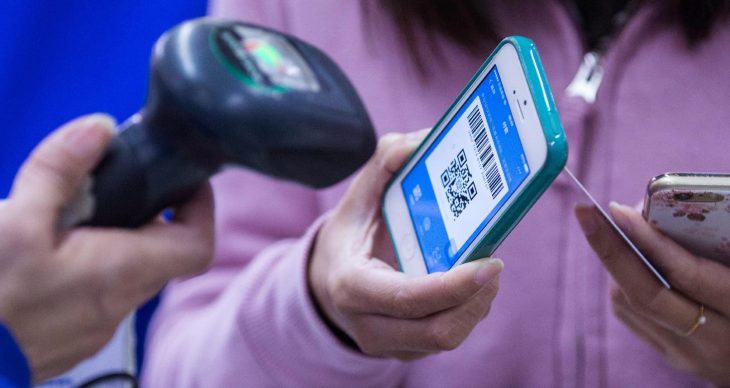
Great news for those traveling to China! You can finally enjoy the seamless, cashless payment experience that you may have heard about for years and avoid the awkward interaction of asking your local friends to pay and giving them paper money that they can’t spend anywhere.
This week, China’s two dominant mobile payment solutions, WeChat Pay and Alipay , announced that foreign users can now pay at Chinese retailers by linking their foreign credit cards, including Visa, Mastercard and Discover.
Previously, using WeChat Pay and Alipay in China required a local bank account, making it challenging for short-term visitors to use these payment methods. While paying has become breezier for those living in China, finding places that accept cash is now a headache for foreign visitors, as the two payments giants have largely replaced cash from metropoles to villages despite the government’s efforts to warn merchants against rejecting cash .
The development is thus a huge improvement in foreign visitors’ experience in China. Given Alipay and WeChat Pay are literally ubiquitous in both China’s online and offline retail spheres, foreign visitors may now be able to hail a Didi car, ride the subway, rent a shared bike, buy fruit from a grocer, order food delivery and even shop online for myriad Chinese e-commerce goods.
WeChat’s announcement provides useful details on what the setup looks like. To activate their WeChat wallets, foreign users will need to authenticate their identity by uploading their passports. Foreign phone numbers can be used for receiving verification codes.
Unfortunately, visitors won’t be able to try out the digitized Chinese hongbao custom, which involves sending or receiving digital versions of auspicious red envelopes filled with money. This feature was originally what drove WeChat’s early wave of mass adoption. Visitors also can’t conduct money transfers, which is unsurprising given China’s stringent control of capital flows across borders.
On WeChat, spending limits per transaction, month and year for foreign visitors are 6,000 yuan (around $835), 50,000 yuan and 60,000 yuan, respectively. Transaction fees are waived for payments under 200 yuan (around $28), and any amount above that charges a 3% fee. Exchange rates are based on the rates of the card organization and the issuing bank.
The payments giants previously had plans to integrate with international bank cards, but those didn’t materialize. Hopefully, the regulatory approvals and infrastructure are ready this time. We will report back once we’ve tried it out on the ground.
China’s central bank digital currency takes a bigger place on WeChat’s platform

- Open Blocked Account
- Sell Currency Online
- Buy Currency Online
- Send Money Overseas
- OUR NETWORK
- LOGIN/REGISTER
Travel Cashless all over the World
- by remitxadmin
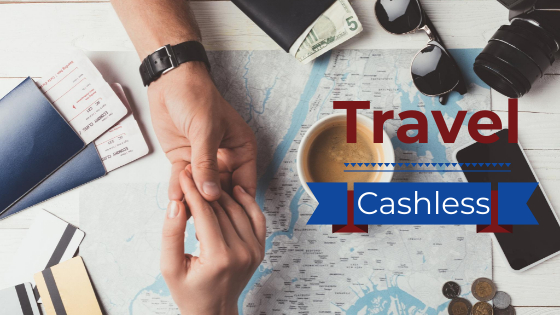
Travel cashless has become a primary need of the present world. The term “cashless” is very much in trend these days. It has become a primary need of the present world. Many of us have become increasingly conscious that we no longer require real cash in our pockets. We all want to use the cashless system.
Travelers no longer need to carry around their own cash while they travel. Instead, they can use credit cards or debit cards to pay for transportation, accommodations, and purchases. It is also possible to use mobile wallets and e-wallets to make payments. People have been traveling in the cashless mode for a long time now and it is quite easy to do so. With cashless systems at airports, there are no queues for exchanging traveler’s cheques, and you won’t have to wait in line at an exchange kiosk. In addition, you can also take online services from RemitX before traveling abroad.
Traveling cashless worldwide: Know the facts
1. Travel cashless to save money
The travel card allows you to choose which currency will be loaded onto it. Because carrying multiple currencies together is convenient, you can choose which country you wish to visit. Furthermore, you won’t lose money if the exchange rate changes while you’re on vacation. Therefore, having currencies loaded on your travel card is very useful, as you don’t have to worry about currency rate fluctuations 60 days in advance.
2. Enables you to carry only a little cash
Cash is the least secure way to carry your holiday spending money.Cash is one way to do it, but there are huge risks associated with carrying all your money in one place. A quick encounter with a pickpocket can leave you broke and not in a holiday mood!That’s why we recommend using a travel money card instead. A travel money card works like a debit card and allows you to load funds onto the card before leaving for your trip. They come with enhanced security features such as Chip & PIN technology and are contactless enabled.
3. You can check your balance anywhere and at any time
Forex Prepaid Card gives you the ease and convenience of managing your money from anywhere in the world. You can manage your forex card from anywhere in the world through the RemitX App lication. You can also use this card to access cash from ATMs worldwide! Some added benefits :
- Check your current balance and transaction history
- Enjoy reloads at real-time currency exchange rates
- Change your PIN
- Lock and unlock your card for added security
- Insurance Cover
- Easy encashments
Final Thoughts
Because of the advantages of cashless travel, people feel that traveling without paper money is more convenient, safer, and easier. RemitX, one of the reputed currency Travel Card providers, is exactly what you need. Spend more time enjoying your holiday without worrying about finances with this card. This card also allows you to travel anywhere cashless.
Let your family & friends know more about travelling cashlessall over the world by sharing this article.
- Search Search Please fill out this field.
- Banking Basics
The Pros and Cons of a Cashless Society
What do we gain and lose when cash is no longer king?
:max_bytes(150000):strip_icc():format(webp)/KhadijaKhartit-4f144e2b63ee4dd4af60ac8a02233c50.jpg)
What Is a Cashless Society?
Benefits of a cashless society.
- Disadvantages of a Cashless Society
- What Does Cashless Look Like?
Examples of Cashless Societies
The bottom line, frequently asked questions (faqs).
The Balance / Caitlin Rogers
A cashless society might sound like something out of science fiction, but it's on its way. Many present-day financial practices and transactions already happen without cash, and many financial institutions, service companies, and even governments are proponents of the shift.
On one hand, transitioning to a cashless system can reduce crime rates, streamline financial transactions, and simplify international payments. On the other hand, it raises concerns about privacy, cybersecurity risks, technological dependency, economic inequality, and the potential for increased overspending. As a result, countries attempting to go cash-free have had varying levels of success.
Key Takeaways
- Many countries are moving toward a cashless society, in which all financial transactions are electronic.
- In addition to simply eliminating the costs and hassles of managing currency, going cashless may also reduce certain types of crime.
- The downsides of going cashless include less privacy, greater exposure to hacking, technological dependency, magnifying economic inequality, and more.
- Credit and debit cards, electronic payment apps, mobile payment services, and virtual currencies in use today could pave the way to a fully cashless society.
A cashless society is one where cash—paper and coin currency—isn't used for financial transactions. Instead, all transactions are electronic, using debit or credit cards or payment services like PayPal, Zelle, Venmo, and Apple Pay . Many countries are moving in this direction, but it's difficult to tell which ones will eliminate cash altogether.
In addition to logistical challenges, several social issues need to be addressed before a society can give up on cash entirely.
The benefits and disadvantages below can give you an idea of the myriad of effects going cashless can have on money and banking as you know it.
Reduced crime rates without tangible money to steal
Digital paper trail, and less money laundering
Less time and cost associated with handling, storing, and depositing paper money
Easier currency exchange while traveling internationally
Exposes your personal information to a possible data breach
No alternative source of money in the case of technical issues or hacker activity
Technological learning curve
Lack of control over spending without a physical reminder
Those with the technological ability to take advantage of a cashless society will likely find that it's more convenient. As long as you have your card or phone, you have instantaneous access to all your cash holdings. Convenience isn't the only benefit. Here are some other benefits.
Lower Crime Rates
Carrying cash makes you an easy target for criminals. Once the money is taken from your wallet and put into a criminal's wallet, it'll be difficult to track that cash or prove it's yours. One study by American and German researchers found that crime in Missouri dropped by 9.8% as the state replaced cash welfare benefits with Electronic Benefit Transfer (EBT) cards.
Automatic Paper Trails
Similarly, financial crime should also dry up in a cashless society. Illegal transactions, such as illegal gambling or drug operations, typically use cash so that there isn't a record of the transaction and the money is easier to launder. Money laundering becomes much harder if the source of funds is always clearly identifiable. It is harder to hide income and evade taxes when there's a record of every payment you receive.
Cash Management Costs Money
Going cashless isn't just convenient. It costs money to print bills and mint coins. Businesses need to store the money, get more when they run out, deposit cash when they have too much on hand, and in some cases, hire companies to transport cash safely. Banks hire large security teams to protect branches against physical bank robberies. Spending time and resources moving money around and protecting large sums of cash could become a thing of the past in a cashless future.
International Payments Become Much Easier
When you travel, you may need to exchange your dollars for local currency. However, if you're traveling in a country that accepts cashless transactions, you don't need to worry about how much of the local currency you'll need to withdraw. Instead, your mobile device handles everything for you.

Disadvantages of a Cash-Free World
Depending on your perspective, going cashless might be more problematic than beneficial. Here are some of the major downsides associated with a cashless financial system.
Digital Transactions Sacrifice Privacy
Electronic payments aren't as private as cash payments. You might trust the organizations that handle your data, and you might have nothing to hide. However, the more information you have floating around online, the more likely it is to wind up in malicious hands. Cash allows you to spend money and receive funds anonymously .
Cashless Transactions Are Exposed to Hacking Risks
Hackers are the bank robbers and muggers of the electronic world. In a cashless society, you're more exposed to hackers. If you are targeted and somebody drains your account, you may not have any alternative ways to spend money. Even if you're protected under federal law, it will still be inconvenient to restore your financial standing after a breach.
Technology Problems Could Impact Your Access to Funds
Glitches, outages, and innocent mistakes can also cause problems, leaving you unable to buy things when you need to. Likewise, merchants have no way to accept payments when systems malfunction. Even something as simple as a dead phone battery could leave you "penniless," in a sense.
Economic Inequality Could Become Exacerbated
Unless special outreach efforts are made, the poor and unbanked will likely have an even harder time in a cashless society. If smartphone purchases become the standard way to transact, for example, those who can't afford smartphones will be left behind. The UK is experimenting with contactless ways to donate to charities and homeless individuals, but these efforts may not be developed enough yet to substitute cash donations.
Payment Providers Could Charge Fees
If society is forced to choose from just a few payment methods, or if one app becomes the standard payment app, the companies who develop these services might not offer them for free. Payment processors may cash in on the high volumes by imposing fees, which would eliminate the savings that should come from less cash handling.
Temptation to Overspend May Increase
When you spend with cash, you recognize the financial impact by physically taking the cash out of your pocket and giving it to someone else. With electronic payments, on the other hand, it's easy to swipe, tap, or click without noticing how much you spend. Consumers may have to rethink the ways they manage their spending.
Negative Interest Rates Could Be Passed Onto Customers
When all money is electronic, negative interest rates could have a more direct effect on consumers. Countries like Denmark, Japan, and Switzerland have already experimented with negative interest rates.
Lowering interest rates generally helps stimulate an economy, but lower rates can also feed inflation, making it so money loses purchasing power.
According to the International Monetary Fund, negative interest rates reduce bank profitability, and banks could be tempted to hike fees on customers to make up that deficit. Banks are limited in their ability to pass on those costs because customers can simply withdraw their cash from the bank if they don't like the fees. In the future, if customers can't withdraw cash from the bank, they may have to accept any additional fees.
What Does a Cashless Society Look Like?
Without cash, payments happen electronically. Instead of using paper and coins to exchange value, you authorize a transfer of funds from a bank account to another person or business. The logistics are still developing, but there are some hints as to how a cashless society might evolve.
- Credit and debit cards : Cards are among the most popular cash alternatives in use today, but cards alone might not be enough to support a 100% cashless society. Mobile devices could become a primary tool for payments instead.
- Electronic payment apps : Apps like Zelle , PayPal, and Venmo are helpful for person-to-person payments ( P2P payments ). In addition, bill-splitting apps allow friends to split their bills easily and fairly. Fintech companies like Stripe, Adyen, and Fiserv support business-to-consumer (B2C) and business-to-business (B2B) transactions, as well as other account-to-account (A2A) online payments, in a reliable and speedy fashion.
- Mobile payment services : These services, along with mobile wallets like Apple Pay, provide secure, cash-free payments. Many nations that use cash sparingly have already seen mobile devices become common tools for payments.
- Virtual currencies : Cryptocurrency is already part of the discussion. Crypto is used for money transfers, and it introduces competition and innovation that may help keep costs low. However, there are risks and regulatory hurdles that make cryptocurrencies impractical for most consumers, so they might not yet be ready for widespread use.
Several nations are already making moves to eliminate cash, with the push coming from both consumers and government bodies. Sweden and India are two notable examples with two different outcomes.
It's not uncommon to see signs that say, "No Cash Accepted" in Swedish shops. According to a Statista survey, less than 10% of people in Sweden reported using cash for a recent purchase, and the share of cash transactions in the country has been steadily declining over the past decade. Consumers are mostly happy with this situation, but those who struggle to keep up with technological developments continue to rely on cash.
The Indian government banned 500 and 1,000 rupee notes in 2016 in an effort to catch criminals and those working in the informal economy. The implementation was controversial, in part, because these notes made up 86% of currency in circulation. However, criminals weren't punished for hoarding untraceable cash, which had been the intent of the move.
The Economic Times cited the Reserve Bank of India as it reported that electronic transactions had increased temporarily, but cash returned to pre-demonetization levels by the end of 2017.
While these two examples had varying levels of success, both countries struggled to address how the marginalized would fare in a 100% cashless society.
With the many technological and societal moves towards digital and virtual financial transactions, cash currency is becoming less and less common. However, the shift to a fully cashless society has many potential drawbacks, and only time will tell whether cash holds a special niche.
What happens to the cash in circulation if a society goes cashless?
Most countries have a department within their governing body that regulates the printing and distribution of currency, as well as its destruction. In the U.S., the Federal Reserve has the power to issue money, but the actual printing (and yes, shredding, too), is handled by the Bureau of Engraving and Printing within the Treasury Department.
Who wants a cashless society?
A cashless society would primarily benefit certain businesses. While some individuals prefer using debit and credit to cash for convenience, businesses benefit from processing fees when consumers use their apps and services to send and receive payments. Handling cash is also expensive, so moving to cashless payments will also save businesses money and make transactions easier to track.
U.S. House Financial Services Committee. " Touchless Transactions Act of 2020 ."
Institute for the Study of Labor. " Less Cash, Less Crime: Evidence From the Electronic Benefit Transfer Program ," Page 2.
United States Mint. " 2020 Biennial Report to the Congress ," Page 3.
Board of Governors of the Federal Reserve System. " How Much Does It Cost To Produce Currency and Coin? "
The White House. " Executive Order on Ensuring Responsible Development of Digital Assets ."
Federal Trade Commission. " Data Breach Response: A Guide for Business ."
TAP London. " What is TAP London? "
Greater Change. " Fund a Person's Path Out of Homelessness ."
Consumer Financial Protection Bureau. " Helpful Tips for Using Mobile Payment Services and Avoiding Risky Mistakes ."
International Monetary Fund. " Back to Basics: How Can Interest Rates Be Negative? "
S&P Dow Jones Indices. " Where Inflation and Interest Rates Intersect ," Page 2.
Internal Revenue Service. " Virtual Currencies ."
Statista. " Share of cash payments in Sweden from 2010 to 2022 ."
U.S. Department of State. " 2017 Investment Climate Statements: India ."
The Economic Times. " A Year After Note Ban, Cashless Economy Is Still a Distant Dream ."
Bureau of Engraving and Printing. " About the BEP ."

Cashless travel is the future

Cashless travel is a term that we have been hearing for a while. Long gone are the days when you had to make sure you got down to the exchange kiosk or the post office for travellers cheques before we go away on our holidays. These days banks and other financial institutes are having to accept the fact that it is safer, easier and more convenient to travel without the use of paper money.
Visa launched a huge drive this year to convert the world to cashless travel. They undertook what they called the ‘ Cashless Challenge ’ as reported by business wire. The idea was to send one lucky traveller on a trip of a lifetime using nothing but his Visa card as a means of payment as a way to prove it is possible.
Another part of this challenge was to join forces with global travel partners to offer all their card holders the chance to benefit from cashless travel. One of the travel partners they brought on board was bidroom.com , booking platform and travel community that offers the same hotels as you can find on other OTA’s, but at the best price available on the web. With partnerships like this, Visa is able to offer their cardholders cheap, convenient travel – they offered all their card holders in Europe six months free access to the travel platform. The Visa/Bidroom Europe deal is for the next three years.

Cashless travel options
Visa is not the only company jumping on the cashless travel bandwagon. There are many companies out there offering ways for guests to be able to travel without the worry of having a small mountain of cash in their wallet or bag.
Companies like Revolut are a prime example of the next generation of cashless travel companies that are emerging to give better rates and easier control over what travellers spend their money on. Essentially a pre-paid card, Revolutt has taken it all a step further and offer the chance to use its Revolut card in over 150 countries all at no extra charge.
There are also many insurance companies using the ‘cashless’ idea to sell travel insurance with more convenience. What this means is that they offer a way to buy travel insurance without paying anything up front. It is not a new concept, but it is one that has been improved upon. Now you don’t need to pay anything upfront nor do you need to apply for reimbursement of any claims that you might have to make. It is all done automatically now, taking away the hassle of having to go through forms to get your money back after the treatment etc.
How to prepare yourself for the cashless revolution
We all may think we are aware of what we need to do, but are hoteliers really prepared for cashless customers? There are many things that you might not have in place to be completely cashless. First of all you need to make sure that your hotel has up to date payment machines that not only have contactless payment facilities, but that they are also ready for things like Blick payments.
Companies like Apple and Samsung for instance, also offer their customers the chance to pay through their phones. A lot of banks and financial institutes are also offering cashless payment options, so make sure you can accommodate them too.
The younger generation will just expect you to be able to accept these types of payments and will be bitterly disappointed if you don’t. And with the world of social media and blogging, you will be heavily publically criticised if you do not offer these to travellers.
As cashless travel becomes more and more popular the larger city destinations are ready for this kind of travel. In London, for instance, you can now travel on all public transport in the city using nothing but your contactless payment card. Other cities like Singapore, NYC and Dubai are all ahead of the rest and can accommodate a cashless traveller completely, every step of the way.
So prepare yourself for cashless travel and make sure you are fully up to date with the options available to you. If you are, then you are ahead of the rest. Prepare for the future, but do it now.
Related Articles

Radisson Hotel Group and STAY announce strategic partnership to elevate guest experiences worldwide

Tips to maximise hotel revenue in 2024

Digital disruption: how hotels are embracing change

What’s the buzz among today’s hoteliers?
Related courses.
You might also like:

The impact of Airbnb short-term rentals on rural and urban communities

The “Golden Circle” of Revenue Management

Blended travel as a huge growth opportunity (with words of wisdom from Marriott)

Does the fate of tourism hinge on land use?

The Top 10 cash controls

Join over 60,000 industry leaders.
Receive daily leadership insights and stay ahead of the competition.
Leading solution providers:

Eigen Payments

Myma.ai (formerly Book Me Bob)

- London, United Kingdom
- Sunday 28 April 2024 / 03:05

Students Traveling with EF Educational Tours and EF Explore America Going Cashless through Partnership with Till Financial's Fee-Free App and Debit Card
- 26.04.2024 12:15 pm

EF Explore America , a leading educational travel company within the United States, and Till Financial , a leading family banking platform for kids and teens, have expanded their partnership to now service international trips with EF Educational Tours , providing the same cashless solution leveraged domestically for international student tour offerings.
EF Explore America and Till Financial began their partnership in 2022, to bring a safe and secure cashless solution to traveling students while incorporating financial learning moments and financial literacy. Till's debit card and app enables both parents and EF tour group leaders to easily transfer funds to students while on tour, managing their spending for meals, souvenirs, and other travel expenses.
EF and Till are now expanding their partnership to include EF Educational Tours, a leader in student travel.
Till's debit card solution now enables EF student travelers to go cashless during both domestic U.S. and overseas international tours. As a benefit of the partnership with EF Educational Tours, Till is waiving foreign transaction fees for students using Till for the duration of their tour, as well as providing curated financial literacy resources to prepare students for spending abroad.
"Travel itself is one of the greatest educational moments a student can experience - learning more about the world around them and more about themselves as someone seeking to become a more confident, independent person. EF Education First is always looking for ways to innovate the travel and learning experience across all our businesses, seeking out new ways we can teach students real life skills, including financial management through this partnership with Till Financial," said Kate Berseth, Executive Vice President, EF Education First. "Our mission as a company is to open the world through education, which is also why we are so proud of the work we are doing to make financial literacy such an important part of the travel experience for these students."
"At Till, we combine traditional book learning with real-world experiences. By tailoring financial literacy content to key life milestones and delivering that content in a format that engages both parents and kids, we make the learning experience more positive and lasting for the entire family." said Taylor Burton, CEO, Till Financial. "We view this partnership as a natural fit. Pairing our fee-free app and debit card with EF's global youth tourism business removes one of the many stressors involved in traveling far from home, while providing kids with an invaluable learning experience and parents with insight into every transaction."
Financial Literacy
Not only has the partnership between Till and EF allowed trips to go cashless and solve historical pain points around accounting and money movement, Till also provides EF student travelers and their families with custom financial literacy resources, personalized for their trip experience. For many students, a trip with EF might be the first time they've managed money or used a debit card. The programming offered by Till teaches students about the spending realities they'll face while traveling, including essential tips around sales tax and tipping, dynamic currency conversion and understanding of international fees—with the goal of empowering students with the right financial skills and knowledge before, during, and long after their tour.
In addition to the financial literacy resources provided to students and their families before and after trips, Till and EF have partnered with FitMoney, a philanthropic nonprofit providing free, unbiased K-12 financial education resources to educators and caregivers for classrooms of all kinds with flexible and asynchronous lesson plans to fit any schedule.
Related News

UnionPay Now Accepted on JD.com: Cross-Border Shopping...
- 26.04.2024 02:25 pm

Paystand Acquires Teampay for Giant Leap Toward B2B...
- 26.04.2024 10:45 am

Elavon and FreedomPay to Transform Payments for...
- 26.04.2024 10:35 am

FastSpring and EBANX Forge Partnership to Expand Pix...
- 26.04.2024 10:15 am

Soakly Partners with GoCardless to Streamline Payments...
- 26.04.2024 07:25 am

Square Brings Offline Payments to All Hardware Devices...
- 25.04.2024 02:25 pm

Flutterwave and Acquired.com Collaborate For Seamless...
- 25.04.2024 11:45 am

Stripe Sessions: 50+ Announcements, Including AI-...

Payhawk Joins American Express SyncTM
- 25.04.2024 11:35 am

Mollie’s Net Revenue Grew 36% in 2023
- 25.04.2024 10:30 am

Visa Joins AWS Partner Network to Help Simplify Global...
- 25.04.2024 10:05 am

Unlimit Secures Online Payment Aggregator License in...
- 25.04.2024 09:25 am
Latest Issue
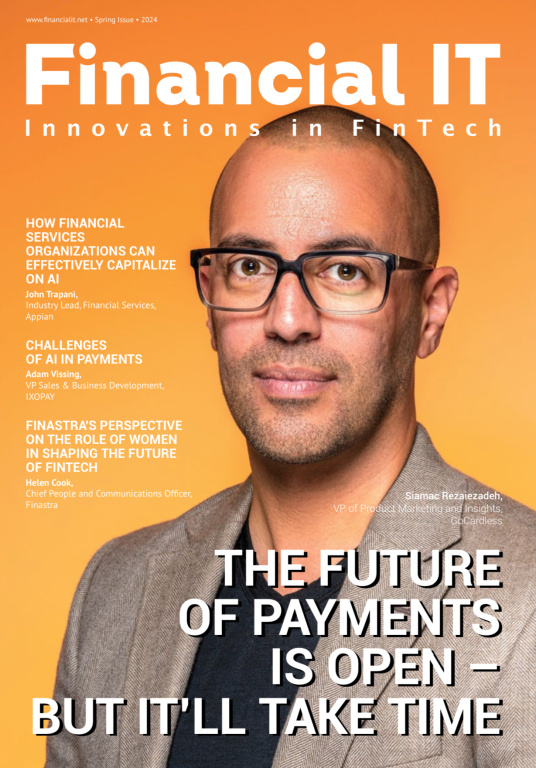
FinTech List

Popular Tags
- Create new account
- Request new password
Download our new app
Get FinTech news headlines, videos, stories and product reviews on your mobile device. Download Financial IT App for Free

Subscribe Now! Get features like

- Latest News
- Entertainment
- Real Estate
- DC vs MI Result
- Crick-it: Catch The Game
- Lok Sabha Election 2024 live
- Bengaluru Election 2024 Live
- UP Election 2024 Live
- Lok Sabha Election 2024
- Election Schedule 2024
- IPL 2024 Schedule
- IPL Points Table
- IPL Purple Cap
- IPL Orange Cap
- AP Board Results 2024
- The Interview
- Web Stories
- Virat Kohli
- Mumbai News
- Bengaluru News
- Daily Digest

Moscow plans measures to woo tourists, Foreign Tourist Card in the offing
The number of indian tourists visiting moscow is slowly witnessing an uptrend and with tourist-friendly steps like e-visa it's likely to grow in coming months.
To woo tourists from across the world, the Moscow City Tourism Committee is taking several measures and to address payment-related issues the Russian government is planning to come out with a virtual 'Foreign Tourist Card', that will enable cashless payments for various services.

During the Covid pandemic the tourist flow to Moscow had dropped significantly. However, the number of Indian tourists visiting Moscow is slowly witnessing an uptrend and with tourist-friendly measures like e-visa this number is likely to grow in the coming months.
"We are still on our way to restore the flow of Indian tourists in Moscow like it used to be before the pandemic. Before the pandemic, there was very steady growth like 12-15 per cent on a y-o-y basis," said Bulat Nurmukhanov, Head of International Cooperation Division of Moscow City Tourism Committee.
Travelling to Moscow has now become easier as tourists from India and 54 other countries can apply for an electronic visa to enter Russia from August 1, 2023.
Moreover, initiatives like the Foreign Tourist Card will help address payment-related issues, after the departure of MasterCard and Visa from the Russian market, Bulat said.
"There is an initiative by the Federal Government of Russia to develop a 'Foreign Tourist Card'. The initiative is under process, some legislative documents have been amended in order to make this card possible.
"The idea behind this card is, a person back home in India can remotely apply for this card and then he/she can transfer money from the personal bank account to this bank account," Bulat added.
This will be a virtual card and this will be issued to the person back home. This card will address the payment-related issues of foreign tourists in Moscow.
To give more travel options to tourists, in March this year, Russian flag carrier Aeroflot increased the frequency of its flight services on the Delhi-Moscow route to seven times a week against four weekly services earlier.
India and Russia "in principle" agreed to revise their bilateral air services agreement earlier this month, allowing Russian carriers to operate up to 64 flights per week from 52 to India.
Russian carriers are allowed to operate these flights to six Indian cities -- Delhi, Mumbai, Goa, Kolkata, Amritsar and Ahmedabad.
"We are really looking forward to the Indian Airlines to restore their flight connections to Moscow. Right now only Aeroflot is operating flights between Delhi and Goa. However, there are some other options available from Dubai to Moscow," Bulat said.
In a bid to tackle the language barrier that makes arriving in and navigating in a new country quite intimidating, there are seven tourist centres across Moscow. It also has a call centre for foreign tourists in case they need any help, Bulat said.
"We are working on translating the city navigation into English. Our businesses are really active and quick to respond to what the market requires," Bulat added.
- Tourist Attraction
- Tourist Spot
- Tourist Destination
Join Hindustan Times
Create free account and unlock exciting features like.

- Terms of use
- Privacy policy
- Weather Today
- HT Newsletters
- Subscription
- Print Ad Rates
- Code of Ethics
- DC vs SRH Live Score
- India vs England
- T20 World Cup 2024 Schedule
- IPL Live Score
- IPL 2024 Auctions
- T20 World Cup 2024
- Cricket Teams
- Cricket Players
- ICC Rankings
- Cricket Schedule
- Other Cities
- Income Tax Calculator
- Budget 2024
- Petrol Prices
- Diesel Prices
- Silver Rate
- Relationships
- Art and Culture
- Taylor Swift: A Primer
- Telugu Cinema
- Tamil Cinema
- Board Exams
- Exam Results
- Competitive Exams
- BBA Colleges
- Engineering Colleges
- Medical Colleges
- BCA Colleges
- Medical Exams
- Engineering Exams
- Horoscope 2024
- Festive Calendar 2024
- Compatibility Calculator
- The Economist Articles
- Lok Sabha States
- Lok Sabha Parties
- Lok Sabha Candidates
- Explainer Video
- On The Record
- Vikram Chandra Daily Wrap
- PBKS vs DC Live Score
- KKR vs SRH Live Score
- EPL 2023-24
- ISL 2023-24
- Asian Games 2023
- Public Health
- Economic Policy
- International Affairs
- Climate Change
- Gender Equality
- future tech
- Daily Sudoku
- Daily Crossword
- Daily Word Jumble
- HT Friday Finance
- Explore Hindustan Times
- Privacy Policy
- Terms of Use
- Subscription - Terms of Use
Saguaro National Park offers travelers an iconic slice of the Southwest

Get your camera ready for Saguaro National Park .
The park is home to the tallest cactus species in the country and a symbol of the Southwest, the saguaro, They’re particularly concentrated in the west district of the park, just outside Tuscon, Arizona.
“We like to call that one the Instagram side because you can literally go anywhere in the park, and there will be at least two or three dozen saguaros in the background of your photo,” said Cam Juárez, Community Engagement and Outreach coordinator and public information officer at the park.
Here’s what else travelers will find at Saguaro, the latest national park in USA TODAY’s yearlong series .
Why is Saguaro National Park worth seeing?
“Saguaros are super special because they only exist in this part of the world the way they do,” said Juárez. “You can visit certain parts of Mexico, you can visit certain parts of central Arizona, but you’re never going to see them the way you see them here.”
They’re not the only scenic beauties in the biodiverse park.
“Our peaks are in the neighborhood of around 9,000 feet,” Juárez said. Visitors can find aspen, pine and fir trees in its sky islands. “As you climb every few 100 feet down in elevation, you're experiencing different biomes all the way down to grasslands, to desert shrub, to basically just what you would imagine a desert to look like.”
Which side is better for Saguaro National Park?
The park is divided into east and west districts, which bookend Tucson. Tucson International is the closest airport.
“My favorite is the west district, just because I love seeing the saguaro. You're going to have 2 million, versus maybe a quarter million saguaros on the east side,” Juárez said. “But if you're a backcountry hiker and you want to hike long distances, the east district, Rincon Mountain District, is definitely better.”
He noted the Arizona Trail , from the U.S.-Mexico border up to the Grand Canyon, goes right through the east district.
Can I drive in Saguaro National Park?
Yes. There is a $25 vehicle entry fee for the park, which is cashless.
Visitors can purchase passes online at Recreation.gov or at a park kiosk using a debit or credit card.
How long does it take to go through Saguaro National Park?
You could visit both sides of the park in one day but may be better off with two.
“If you only have one day, definitely take the Cactus Forest loop ,” Juárez recommended. Cactus Forest Drive is a scenic 8-mile roadway in the east district. The west district has a 5-mile Bajada Loop Drive.
What is the best time to visit Saguaro National Park?
Juárez called October and mid-November magical. That’s just before the park’s busiest time of year, which he said runs from after Thanksgiving through April.
“Two times a year, we see a lot of rainstorms,” he added. “We have our traditional summer monsoons, and we have our winter rains. As a bimodal desert, you're going to see different blossoms at different times of the year.”
He said monsoons amplify the park’s already magnificent sunsets.
“The different colors of red and yellows and golds, coupled with purple skies, it's just everything that you see on postcards,” he said. “It just comes alive.”
What does the saguaro mean to Native Americans?
“The Tohono O’odham have a very special relationship with the park. Their whole culture revolves around the saguaro cactus, or as they call it, the Ha:san ,” Juárez said. Tribal members may harvest the fruit for traditional uses with a special permit through the Interior Department and National Park Service. “The fruit is harvested as part of their traditional medicine, their traditional foods. A lot of ceremonial wines come from that.”
He said other tribes tied to the land include Pascua Yaqui Tribe and Gila River Indian Community .
What else should visitors know about Saguaro?
“I would love for people to know that Saguaro National Park is making a concerted effort to be conscientious of the fact that the representation matters,” Juárez said. “ Friends of Saguaro National Park , in conjunction with our team here, developed what's called the Next Generation Ranger program, and it's not just a paid internship. It's an opportunity for (interns) to gain experience and gain what's called the Public Land Corps credit opportunity, which will help us diversify not just race and ethnicity but also ability and gender … so when you walk into Saguaro National Park, you're going to run into very knowledgeable, very experienced, diverse young people that are matching our country's identity.”
Nearly 45% of the Tucson population is of Hispanic or Latino heritage, according to the U.S. Census . Several park staffers speak Spanish, including Juárez.
“It comes in handy because we're not just talking our friends to the south. We're talking all the way down to Central America and South America that are visiting national parks,” he said, adding that sometimes they’ll welcome visitors in Spanish. “You should see the look on people's faces. They're like, ‘Wow, you speak my language.’ I encourage all of my coworkers and staff people to make it a point to try to at least learn how to say welcome and hello in different languages.”
National parks for every body: How to make the outdoors more accessible
The park is also making a concerted effort to welcome guests of all abilities. Both districts offer a variety of accommodations, including accessible trails , braille and large-text versions of the park brochure, touchable exhibits, captioned programs and more.
“I definitely am an active voice, as a person with a physical disability, that says we can't just give folks a smidgen of what able-bodied individuals can get,” Juárez said. “We should make a very concerted effort to expand on everything we've done so far.”
- United Arab Emirates
- Switzerland
- The Netherlands
- Puerto Rico
- United States
- New Zealand
- ➨ Choose from World Map
- Budget Travel
- Family Travel
- Getting Around
- Visas & Passports
- Work with Us
Browsing Category
- Czech Republic
- Saint Martin
- Uncategorized

Moscow Travel Guide: Best Things to Do + More [2023]
· everything to know about visiting moscow, including the best things to do and how to get around. ·.

Moscow is Russia’s vibrant capital city, and it also happens to be the largest city in all of Europe. The city’s long and infamous history makes it one of the most unique places we have ever visited.
The architecture ranges from centuries-old palaces to uniform, gray concrete buildings. The people range from cold and private to warm and welcoming. Moscow is a city is strong juxtapositions, and we learned a lot during our time there.
This post will break down all you need to know about visiting Moscow, including the best things to do, how to get there, how to get around, and more.

The Best Things to Do in Moscow
1. explore the red square.
The Red Square is the heart of Moscow. Most of the city’s top attractions can be found here, including just about everything on this list. The Kremlin, St. Basil’s Cathedral, and Lenin’s Mausoleum are all located here, and the State Historical Museum and GUM are not far from here, either.
The Red Square is a common home for parades, protests, and seasonal celebrations. There are massive Christmas celebrations here, with food vendors and carnival rides set up in numbers.

2. Check Out the Ziferblat
The Ziferblat is a café in Moscow that is unlike any café we have ever been to. While most cafes charge you for your drinks and food, the Ziferblat charges you for your time.
Upon arrival, you are given a clock. When you leave, the barista calculates how much time you spent in the café and charges you accordingly. This concept was created to help visitors to be more intentional with their time, and the cafe itself is incredibly charming.
For a detailed look at everything you need to know before you visit, make sure you read my post about visiting the Ziferblat Cafe in Moscow .

3. Marvel at St. Basil’s Cathedral
St. Basil’s Cathedral is one of the most iconic churches in the world, and it was the single thing we were most excited to see while in Moscow. Built almost 500 years ago, St. Basil’s Cathedral is recognized by its colorful domes and whimsical style. The church is of the Russian Orthodox faith, and the inside is just as wondrous as the outside.
St. Basil’s Cathedral is located on the edge of the Red Square, making it incredibly convenient to visit. Entrance for non-worshippers costs 800 rubles, and tickets can be bought at the church

4. Explore the Kremlin
The Kremlin is the largest active fortress in Europe, and it is the site of most of Russia’s government affairs. In addition to government buildings, the Kremlin Complex is filled with courtyards, towers, and museums that are open to the public. If you have the time, you could spend a couple of days fully exploring all that there is to see in the Kremlin.

5. Walk Through Lenin’s Mausoleum
Vladimir Lenin is one of the most important figures in Russian history, and his body is located perfectly embalmed in a mausoleum in the Red Square. The Mausoleum is open to the public to visit, and as long as you are willing to go through a few security checks, it is easily one of the best things to do in Moscow. Its convenient location in the Red Square makes it a can’t miss attraction.
There is absolutely no photography allowed inside the Mausoleum. Do not test this rule.

6. Wander Along Arbat Street
The Arbat is a very popular street in Moscow that is lined with stores, cafes, and other touristy attractions. It is one of the oldest streets in the city, dating back to the 1400s. This street is both quaint and trendy, and there are many walking tours that introduce tourists to the neighborhood’s wonders and highlights.

7. Catch a Show at the Bolshoi Theatre
As a lover of the arts, it is hard to think of Moscow and not think of ballet. Russia has always been a top dog in the world of fine arts, and Bolshoi Theater is one of the best places to catch a performance. We were lucky enough to attend an Opera here, and it is a venue that you don’t want to miss out on if you enjoy opera, ballet, or orchestral performances.
8. Visit the State Historical Museum
The State Historical Museum is one of the most respected museums in Moscow. Despite its name, it is not really focused on the history of Russia as a nation. Rather, it contains a collection of artifacts from all throughout Russia’s history.
The museum’s collection is very broad in nature. It houses some items from indigenous tribes that used to occupy the region, pieces collected by the Romanov family, and more.
9. Wander Around GUM
GUM is an absolutely massive mall within walking distance of the Red Square. It isn’t just the size that draws visitors here; it’s the sense of luxury. The mall is so beautiful inside, much like the metro stations.
While visiting a mall might not sound like it belongs on a bucket list, this mall does. You will not want to miss out on visiting GUM while in Moscow.

10. Admire the Cathedral of Christ the Saviour
While St. Basil’s Cathedral is the most iconic church in Moscow, it isn’t the only one. The Cathedral of Christ the Saviour is absolutely stunning, with massive golden domes. It is the tallest Orthodox church in the world, and it is the seat of the Orthodox Patriarch of Moscow.
It is located just about a mile from the Red Square, just south of the Kremlin Complex. You can walk to it from the Red Square in about 20 minutes.
How to Get to Moscow
Flying to moscow.
Moscow has three major international airports: Sheremetyevo (SVO) , Domodedovo (DMO) , and Vnukovo (VKO) . All three of them are directly connected to downtown Moscow by the Aeroexpress trains, which leave every 30 minutes throughout the day. By Aeroexpress train, you can expect to get to the city center in 25-45 minutes depending on the airport that you fly into.
Sheremetyevo is the biggest and busiest of the three airports, and it is the one you are most likely to fly into – especially if you are coming from outside of Europe or the Caucus region. We flew into Sheremetyevo on a direct flight from New York City.
I usually provide backup airport options, because flying right into the city isn’t always the cheapest way to get where you’re going. Unfortunately, when it comes to Moscow, don’t really have a choice other than to fly right into Moscow. It is a very remote city, and it is usually the cheapest place to fly into in Russia as a whole.
Since Sheremetyevo is so busy, you will probably find a great flight option anyway. I wrote in my post about finding cheap flights that using hub airports will lead to more affordable airfare, and the same logic applies here. Even though Russia’s national airline, Aeroflot, is no longer a member of the SkyTeam Alliance, Moscow is still a major hub connecting passengers from all over the world.

READ OUR CHEAT SHEET
Train or Bus to Moscow
Trains and buses are one of the most popular ways to get around Europe. However, they’re of very little use when you’re trying to get to Moscow.
Moscow is hundreds of miles from the nearest major cities. The only major European city that can even be reached within 8 hours on the ground is St. Petersburg, and even the Baltic capitals of Riga, Vilnius, and Tallinn are over 12 hours away.
If you want to get to Moscow, the best option is almost always to fly. While the train routes to Moscow are scenic, they simply take forever.
How to Get Around Moscow
METRO | TROLLEYS | TRAMS | BUSES
Moscow has one of the most memorable metro systems in the world. Its metro lines are very deep underground, and the stations are absolutely stunning. Each station has its own unique style, but all of them contain escalators that seem to go on forever.

The system was built in an effort to showcase the power of the Soviet Union and its bright future. The plans were a form of propaganda, but they resulted in what is still one of the most visually appealing subway systems on earth.
Moscow’s metro system isn’t just pretty. It is also very useful and accessible. The system has 17 lines that connect the city and its surrounding area.
But wait; there’s more!
The Moscow metro system is also incredibly affordable, with each ride costing less than a dollar. The metro is by far the best way to get around Moscow, as it is almost impossible to beat the connection times and the low cost to ride.
Tickets can be bought at electronic, English-speaking kiosks in stations, or directly from ticket counters at certain larger stations. There are also day passes available, which are a very solid option if you plan on riding the metro several times per day.

The metro is by far the best way to get around Moscow.
In addition to the metro system, Moscow also has a network of buses, trams, and trolleys. This system is nowhere near as convenient or well-connected as the metro, though, and is likely of little use to you during your trip. There is no Uber in Moscow, but a similar app named Yandex is available if you need a ride in a pinch.
How Many Days Do You Need in Moscow?
Moscow is the biggest city in all of Europe, and it is absolutely loaded with things to do. You could spend weeks in Moscow and still find new things to do. Of course, most travelers don’t have that kind of time to spend in one place!
I recommend spending no less than three full days in Moscow, and ideally closer to five or seven.
Moscow is very spread out, and it can take some time to get from one major point to another. There are also so many places that are nice to just sit back and relax, which is hard to do when you’re in a hurry trying to cram activities into just a few days.
If you only have a week to visit Russia, I’d advise spending all of the time in one city. If you decide to split your time between Moscow and St. Petersburg, I recommend not trying to squeeze in any day trips beyond those two cities.

When Is the Best Time of the Year to Visit Moscow?
There are two different ways to approach this question. Personally, I think the best time to visit Moscow is around Christmas and New Year’s Day. While the weather will be absolutely freezing, Moscow is a surreal winter wonderland in December and January.
We were in Moscow right before Christmas. While it was very cold, you can always bundle up. Exploring the Christmas markets and pop-up ice skating rinks throughout Moscow is one of my favorite memories from anywhere I’ve traveled, and I dream of going back to do it again.
If you aren’t fond of the cold, Moscow is beautiful in the summer. It tends to get pretty cold in the shoulder seasons, so if you want warm weather, you should plan to visit in the summer. Moscow actually gets pretty warm in July and August, and there are a bunch of fantastic places to soak up the sun within the city.
The best time to visit Moscow is either around Christmas or from late May to August.

Is Moscow Safe to Visit?
While Moscow is a truly wonderful city, there’s no denying that visiting Russia comes with risks. As the country is run by an infamous communist dictator, concerns about visiting are valid. While we didn’t experience any sort of threat or negative treatment during our time in Moscow, we visited in a peaceful time.
In our experience, Russia doesn’t seem to detain normal Americans or Westerners to use as pawns. As a regular person, as long as you don’t commit any crimes, there is a slim chance you will run into any issues. However, Russia will not hesitate to enforce its laws against foreigners, and illegal behaviors will likely land you in a very compromising position.
Russia will not hesitate to enforce its laws against foreigners, and illegal behaviors will likely land you in a very compromising position.
To make matters worse, Russia has a bad reputation for gang violence. While the Russian mafia has very little interest in normal Western tourists, they won’t hesitate to pick a fight with anyone who ventures into their sphere of influence. If you seek out illegal substances or activities, you could be a target of the mafia.
If you seek out illegal substances or activities, you could be a target of the mafia.
Finally, since Russia’s invasion of Ukraine, things are all very different. Russia is currently at war, and there are battles raging within 8 hours of Moscow. While it is still relatively safe to visit, that could change at any time as the war with Ukraine continues.
Is Moscow Worth Visiting?
Without a doubt, Moscow is worth visiting. It is one of the most unique major cities we have ever visited, and we hope to make it back one day. The Russian Orthodox churches are stunning, the city’s history is unlike any other, and the food is to die for.
While many visitors prefer St. Petersburg to Moscow, I think Moscow deserves a lot of hype of its own. Moscow is the beating heart of Russian culture and history, and it’s a place I highly recommend checking out if you have the chance.

That’s all we have for you about Moscow! I hope this post was helpful as you plan your trip to Russia’s capital.
Have you been to Moscow? Or is this your first time visiting? Comment below if you have anything to add to our travel guide!
Hi, I'm Greg. I'm an avid traveler who has traveled to over 50 countries all around the world with my wife and kids. I've lived in Italy, Mexico, China, and the United States, and I dream of moving abroad again in the future. With this blog, I provide my audience with detailed destination guides to my favorite places and pro-tips to make travel as stress-free as possible.
Leave a comment
Save my name, email, and website in this browser for the next time I comment.
Meet The Author - Greg

Recent Post

How Much Does a Trip to Egypt Cost: Budget Breakdown
March 10, 2024

Best Time to Visit the India Gate in Delhi [2024]
March 1, 2024

Flying with a Sinus Infection: Tips to Avoid Pain
February 20, 2024

11 Best Things to Do in Breckenridge Besides Skiing
February 12, 2024

10 Best Beaches in Mexico for Families (We Lived Here)
February 3, 2024


Moscow ready to welcome Indian travellers with improved infrastructure, untapped attractions
Moscow, Sep 14 (PTI) Russia is making an active bid to attract Indian travellers to visit Moscow -- a huge megalopolis and the historical, political and spiritual heart of the Russian Federation.
The Moscow City Tourism Committee is promoting the city not only as a cultural capital but also as a business hub as it plans to onboard trade partners, tourists and vacationers.
Moscow has also strengthened cooperation with the tourism sectors of allied nations, hosting familiarization tours for delegates and arranging business trips to showcase the city's tourism potential.
To accommodate visitors, Moscow is improving its infrastructure: signs are now available in English and Chinese, all announcements on public transport are repeated in English, and hotels are also adapting to cater to the needs of guests from various countries and ensure a comfortable stay.
"We are still on our way to restore the flow of Indian tourists in Moscow like it used to be before the pandemic," said Bulat Nurmukhanov, Head of International Cooperation Division of Moscow City Tourism Committee.
Bulat further said that before the pandemic, there was a steady growth of 12-15 per cent on a year-on-year basis. In the first half of the year, Moscow received about 20,000 Indians, compared to the same period a year ago, it is about 56 per cent higher.
In a bid to make Moscow a must-visit destination, the committee is actively working on improving the infrastructure for international travellers. Moscow is spearheading the development of innovative standards in catering to the needs of foreign travellers.
Tourists arriving in the capital can stay in hotels of various price segments. They can savour traditional Russian cuisine, and can also indulge in a diverse culinary experience, with options ranging from authentic Indian delicacies to continental dishes prepared to the highest standards.
In 2022, the number of foreign tourists who visited Moscow increased by 6.3 per cent compared to 2021, reaching a total of 1.7 million.
Travelling to Moscow has now become easier as tourists from India and 54 other countries can apply for an electronic visa to enter Russia from August 1, 2023.
The impact of e-visa rollout would be available by October this year after the quarterly data from the Russian border control agencies is analysed, Bulat said.
Moreover, the Russian government is planning to come out with a virtual 'Foreign Tourist Card' that will enable cashless payments for various services.
"The idea behind this card is, a person back home in India can remotely apply for this card and then he/she can transfer money from the personal bank account to this bank account," Bulat added.
Meanwhile, sources in the Indian Embassy in Moscow told reporters that the Indian tourism ministry as well as the governments of Goa and Kerala are slated to participate in roundtable discussions this month.
There are also plans to engage social media influencers to improve the inward traffic to India. Before the pandemic, around 3 lakh Russian tourists visited India annually. The numbers are down to around 80,000-90,000 of late.
To facilitate easy visitor movement across the city, there is "Discover Moscow" -- a navigation and travel web portal about Moscow and "RUSSPASS travel service" -- a digital platform designed for planning trips across Russia.
The Discover Moscow portal features descriptions of over 1,200 architectural landmarks in Moscow. The site provides news, digests with festival and event information and curated lists of exhibition venues.
By availing the RUSSPASS travel service, tourists can access all essential information for a trip to Moscow on the site, including visa and currency matters, accommodation and transportation options in the capital.
The site also offers a trip builder feature, allowing tourists to select pre-designed city routes or create their own itinerary from their favourite locations. There are versions of the site in Russian, English, Spanish and Arabic.
On the cultural scene, Moscow boasts 10,000 cultural venues including theaters, museums, libraries, parks, cinemas, concert halls, and more. In the last decade, around 900 parks and green spaces have been renovated.
(The PTI journalist was in Moscow on the invitation of the Moscow City Tourism Committee).


IMAGES
VIDEO
COMMENTS
In a transition hastened by the pandemic, increasingly you can travel abroad and barely ever handle a physical bill or coin, whether pounds, kroner or euros. A guide to going cashless overseas.
London. London is one of the easiest places to visit without pounds in your pocket. Transportation is one tap away as the Tube, trams, and buses operated by Transport for London are all cashless. Also, black cabs accept credit and debit and won't take a surcharge for using a card.
Finland. Their central bank, the Bank of Finland, predicts the country will be cashless by the end of 2029, just like their neighbors in Scandinavia. Almost everyone in Finland has a card— 98% have a debit card, while 63% have a credit card. Cashless transactions there were expected to hit almost 60 billion euros this year.
Several countries and even cities have become progressively cashless in recent years, making cashless travel more and more prominent. We even talked about contactless and cashless travel in a recent blog post, and we think it will continue to see fewer people paying with cash, instead using credit and debit cards, as well as alternative forms of payment like PayPal, Venmo, WeChat, and even ...
As technology advances, digital payments are becoming more secure and commonplace. Sweden is leading the list of countries going cashless, and will likely eliminate cash by the end of 2023to only accept digital payments. Cash transactions only accounted for 1% of Sweden's GDP in 2019, proving that cash has been on a stark decline the past few ...
an online presence in banking and monetary transactions. A cashless. travel trend is on the rise as a result of advances in paper-free. payments and online purchases. We need to ask how older generations. and smaller businesses will cope and adapt to these changes in how. we move and spend money.
How to leave the cash at home and travel credit card only. Apple Pay, mobile wallets, credit cards and more. The future of money is increasingly cashless. And, so too are your travels. From convenience to cash-back offers and rewards points, there are many reasons to leave the cash at home and pack the plastic. From nice-to-have to necessity.
Cashless payments take flight: How cash alternatives could change post-pandemic travel Bank experts share how paying with cashless alternatives can provide travellers with ease, security and benefits
Cashless payments for the global traveller is here. Now you can top up your wcashless travel wallet and use 'wandoOs' wherever you find the "W Pay" sign. Use at Businesses, Events & Festivals. Transform the way you travel. Reduce the need to pay credit card fees and expensive transferring of your money to local currencies.
Cashless transactions are fast becoming the preferred choice of payment for travellers worldwide. With the post-pandemic world seeing a boom in what is coined as 'revenge travel', travellers ...
Cashless payments for the global traveller is here. Now you can top up your wcashless travel wallet and use 'wandoOs' wherever you find the "W Pay" sign. Use at Businesses, Events & Festivals. Transform the way you travel. Reduce the need to pay credit card fees and expensive transferring of your money to local currencies.
Visitors also can't conduct money transfers, which is unsurprising given China's stringent control of capital flows across borders. On WeChat, spending limits per transaction, month and year ...
Travel cashless to save money. The travel card allows you to choose which currency will be loaded onto it. Because carrying multiple currencies together is convenient, you can choose which country you wish to visit. Furthermore, you won't lose money if the exchange rate changes while you're on vacation. Therefore, having currencies loaded ...
When you travel, you may need to exchange your dollars for local currency. However, if you're traveling in a country that accepts cashless transactions, you don't need to worry about how much of the local currency you'll need to withdraw. ... Cashless Transactions Are Exposed to Hacking Risks . Hackers are the bank robbers and muggers of the ...
Cashless travel is a term that we have been hearing for a while. Long gone are the days when you had to make sure you got down to the exchange kiosk or the post office for travellers cheques before we go away on our holidays. These days banks and other financial institutes are having to accept the fact that it is safer, easier and more ...
The new cashless system, SimplyGo, will enable visitors to use their foreign-issued contactless credit, debit or prepaid card or mobile wallet to pay for bus and train trips. A nominal administrative and overseas transaction fee will be charged. Singapore is among 150 cities globally to integrate Mastercard's contactless payments technology ...
Owing to the increasing passenger preference for cashless travel, Karnataka State Road Transport Corporation (KSRTC) is set to adopt a cashless system. Bus conductors will soon be equipped with ...
EF Explore America, a leading educational travel company within the United States, and Till Financial, a leading family banking platform for kids and teens, have expanded their partnership to now service international trips with EF Educational Tours, providing the same cashless solution leveraged domestically for international student tour offerings. EF Explore America and Till Financial began ...
April 13, 2021. Many agents' websites claim that their Travel Medical Insurance plans are cashless or direct payment plans. This would mean that the traveler wouldn't need to pay upfront and that the medical provider would bill the insurance company. However, when it comes to travel medical insurance plans, there is no guarantee for ...
Moscow's burgeoning gastronomic scene has been causing a stir locally and internationally. Published for the first time in 2021, the Michelin Moscow Guide awarded its prestigious stars to no ...
Cashless travel to be a reality on govt.-run buses in Karnataka 2024-04-28 - Darshan Devaiah B.P. Owing to the increasing passenger preference for cashless travel, Karnataka State Road Transport Corporation is set to adopt a cashless system. Bus conductors will soon be equipped with Electronic Ticketing Machines (ETMs) capable of accepting ...
The new festival hours are 11 a.m. to 9 p.m. Thursday, April 25; 11 a.m. to 10 p.m. Friday and Saturday, April 26-27; and 10 a.m. to 7 p.m. Sunday, April 28. "To be able to hang out Friday and ...
To give more travel options to tourists, in March this year, Russian flag carrier Aeroflot increased the frequency of its flight services on the Delhi-Moscow route to seven times a week against ...
There is a $25 vehicle entry fee for the park, which is cashless. Visitors can purchase passes online at Recreation.gov or at a park kiosk using a debit or credit card.
3. Marvel at St. Basil's Cathedral. St. Basil's Cathedral is one of the most iconic churches in the world, and it was the single thing we were most excited to see while in Moscow. Built almost 500 years ago, St. Basil's Cathedral is recognized by its colorful domes and whimsical style.
Moscow, Sep 14 (PTI) Russia is making an active bid to attract Indian travellers to visit Moscow -- a huge megalopolis and the historical, political and spiritual heart of the Russian Federation